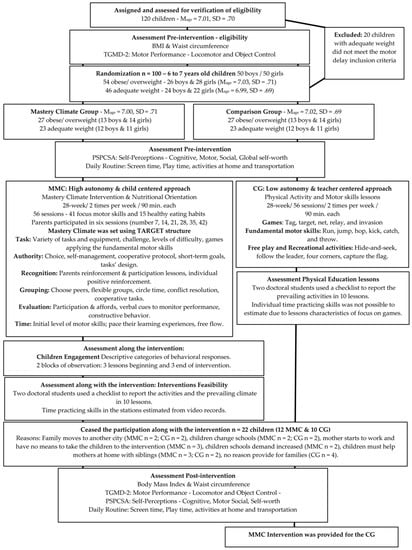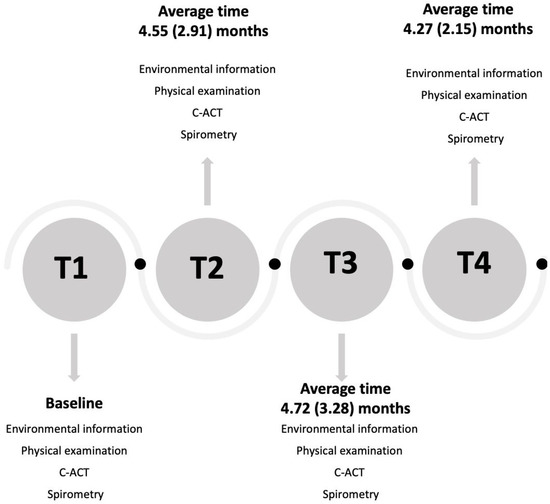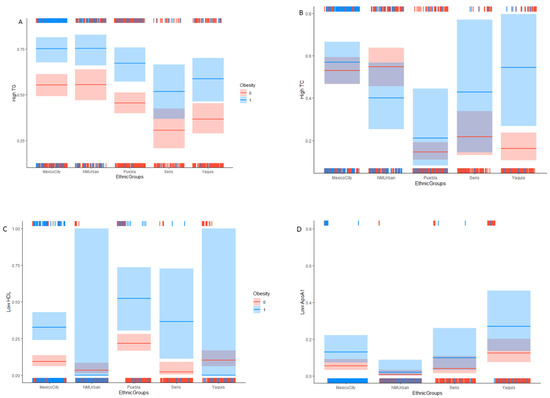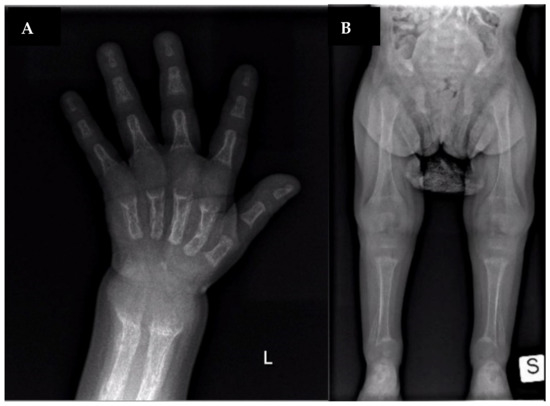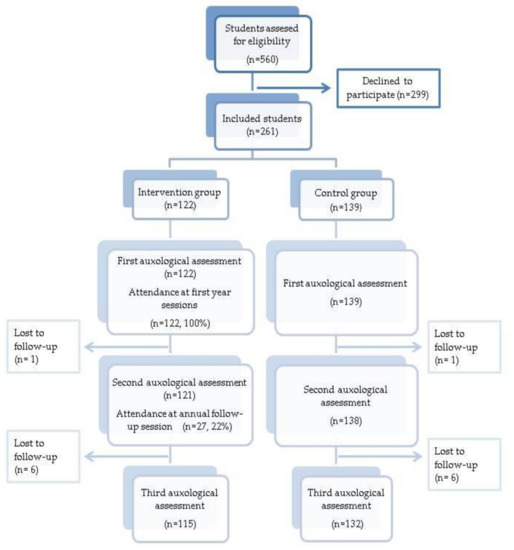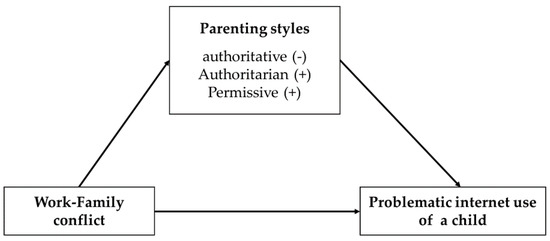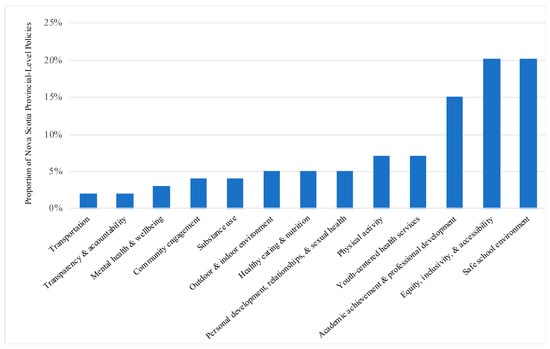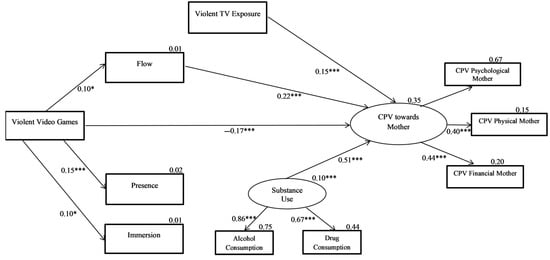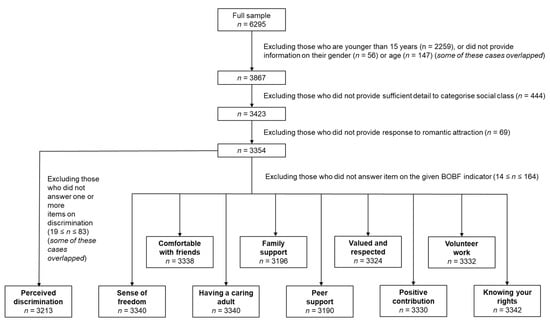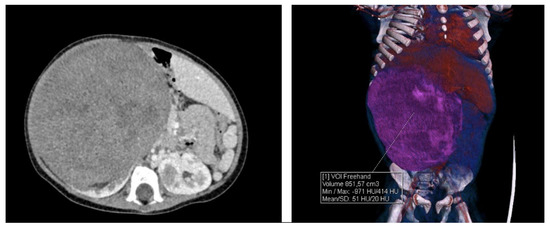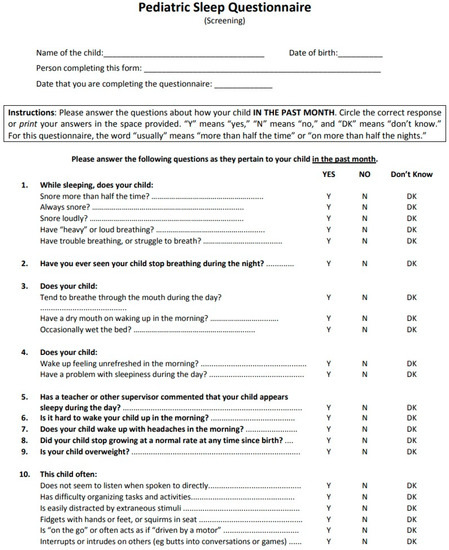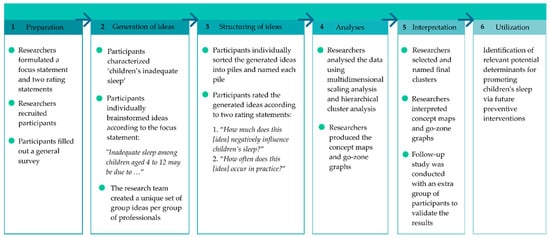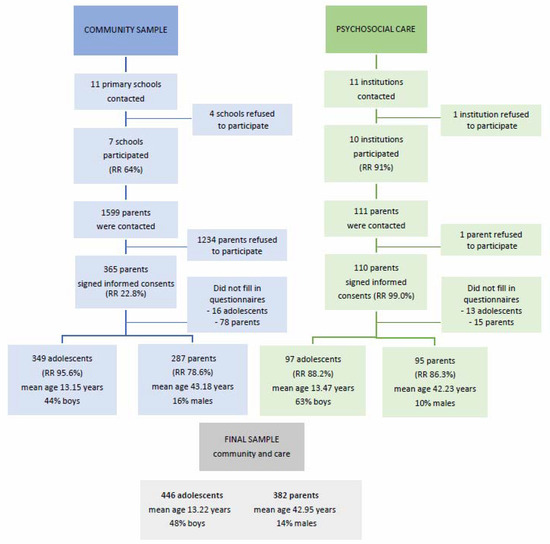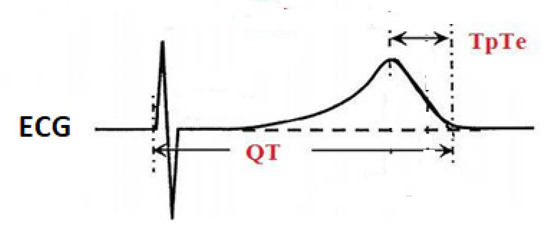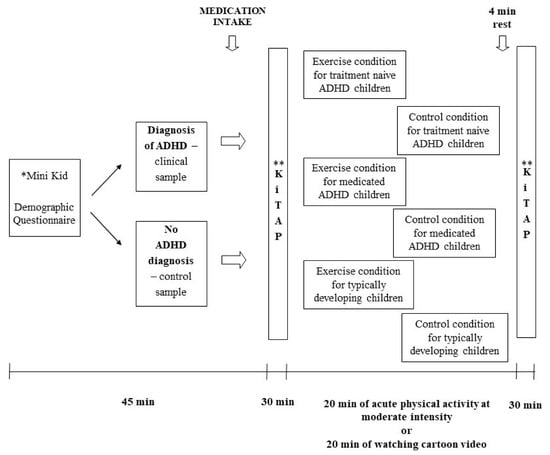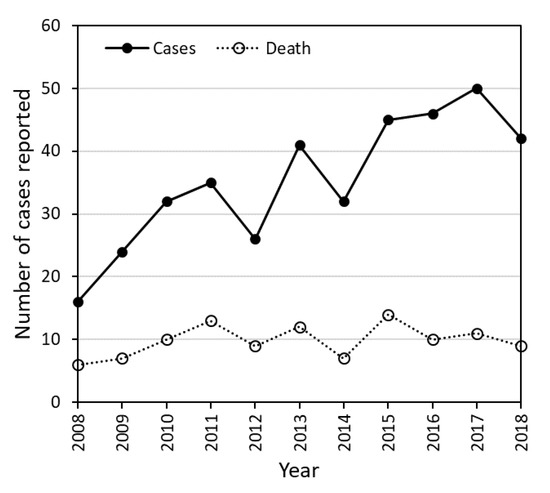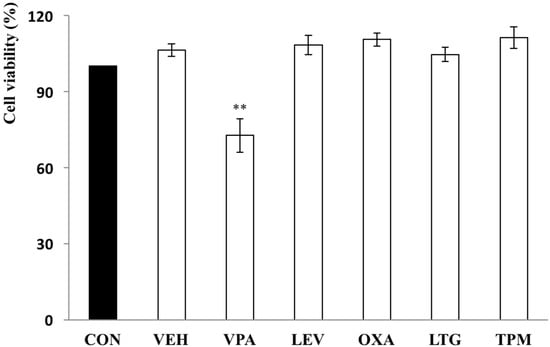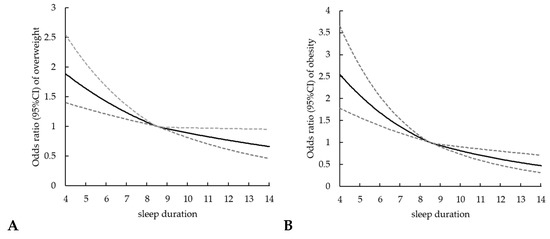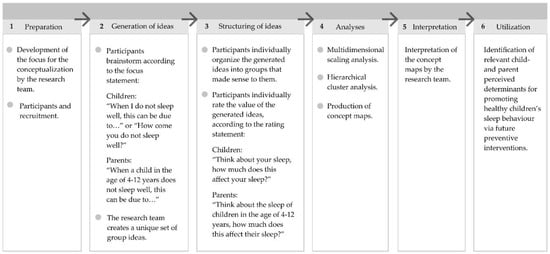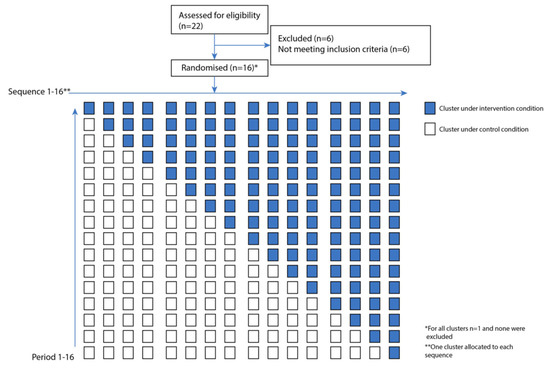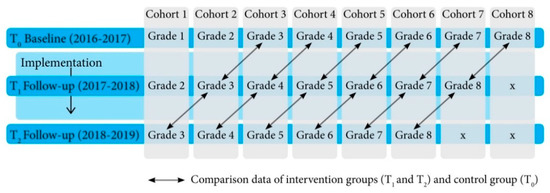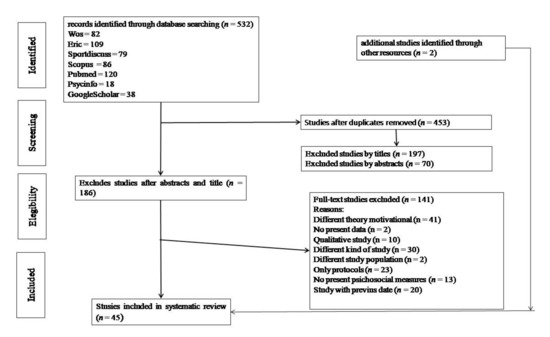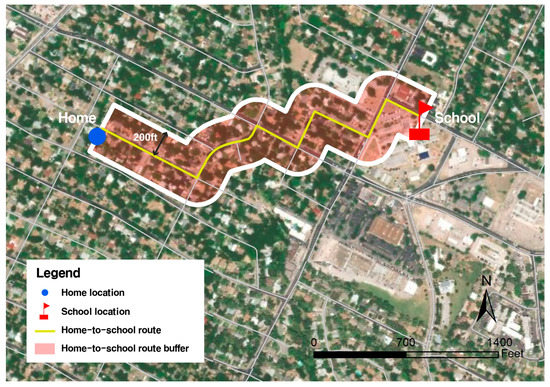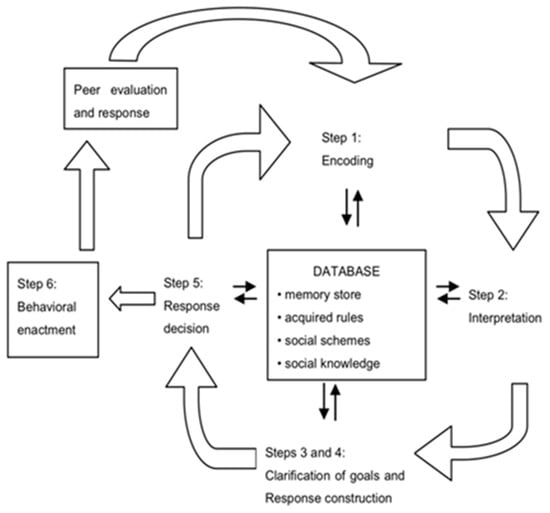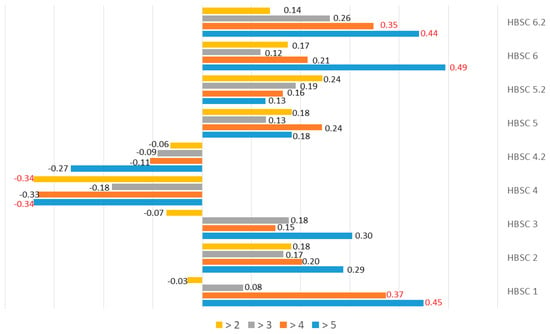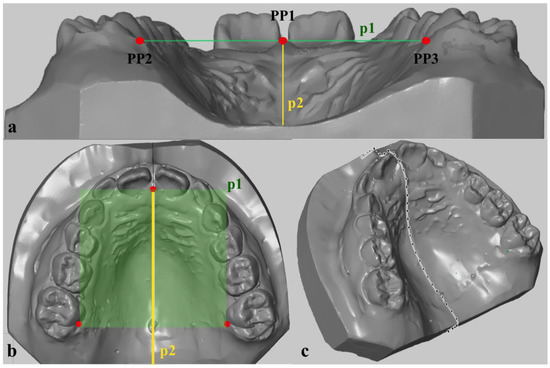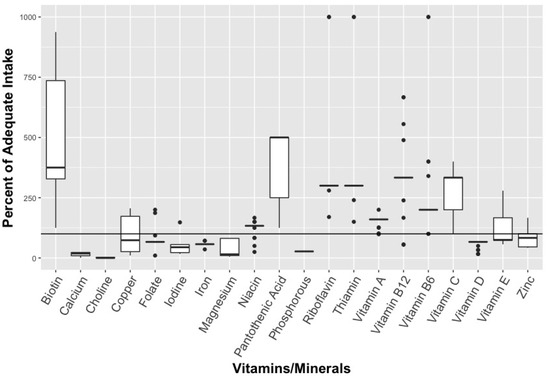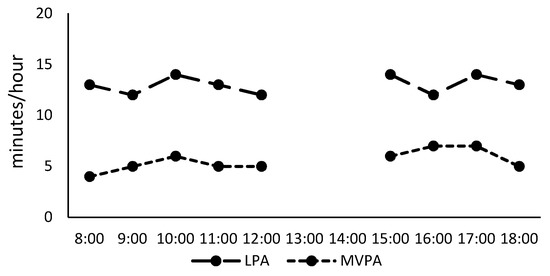Feature Papers in Children's Health
(Closed)
Share This Topical Collection
Editors
 Dr. Jitse P. van Dijk
Dr. Jitse P. van Dijk
 Dr. Jitse P. van Dijk
Dr. Jitse P. van Dijk
E-Mail
Website
Collection Editor
1. Department of Community and Occupational Medicine, University Medical Center Groningen, University of Groningen, 9713 AV Groningen, The Netherlands
2. Olomouc University Social Health Institute, Palacky University Olomouc, 771 11 Olomouc, Czech Republic
3. Graduate School Kosice Institute for Society and Health, P.J. Safarik University in Kosice, 040 11 Kosice, Slovakia
Interests: mental health; adolescents; Roma health; religiosity/spirituality and health
Special Issues, Collections and Topics in MDPI journals
 Dr. Zuzana Dankulincova
Dr. Zuzana Dankulincova
 Dr. Zuzana Dankulincova
Dr. Zuzana Dankulincova
E-Mail
Website
Collection Editor
Department of Health Psychology, Faculty of Medicine, PJ Safarik University in Kosice, Trieda SNP 1, 04011 Kosice, Slovakia
Interests: adolescence; mental health; well-being
Topical Collection Information
Dear Colleagues,
We are pleased to announce the Special Issue entitled “Feature Papers in Children’s Health” in IJERPH. This is a collection of important high-quality papers (original research articles or comprehensive review papers) published in Open Access form by Editorial Board Members, or prominent scholars invited by the Editorial Office and the Section Editor-in-Chief. This Special Issue aims to discuss new knowledge or new cutting-edge developments in the children’s health research field through selected works, which will make a great contribution to the community. We consider that this issue will be the best forum for disseminating excellent research findings as well as sharing innovative ideas in the field.
Papers could be either research papers with a detailed summary of their own work done so far, or papers highlighting the state-of-the-art developments in one of the areas covered by the Section “Children’s Health”. Contributions to this important Special Issue will be accepted by invitation only.
You are welcome to send a tentative title and a short abstract to our Editorial Office ([email protected]) for evaluation before submission. Please note that selected full papers will still be subjected to a thorough and rigorous peer-review.
We are looking forward to receiving your excellent work.
Dr. Jitse P. van Dijk
Dr. Prof. Zuzana Dankulincova
Collection Editors
Manuscript Submission Information
Manuscripts should be submitted online at www.mdpi.com by registering and logging in to this website. Once you are registered, click here to go to the submission form. Manuscripts can be submitted until the deadline. All submissions that pass pre-check are peer-reviewed. Accepted papers will be published continuously in the journal (as soon as accepted) and will be listed together on the collection website. Research articles, review articles as well as short communications are invited. For planned papers, a title and short abstract (about 100 words) can be sent to the Editorial Office for announcement on this website.
Submitted manuscripts should not have been published previously, nor be under consideration for publication elsewhere (except conference proceedings papers). All manuscripts are thoroughly refereed through a single-blind peer-review process. A guide for authors and other relevant information for submission of manuscripts is available on the Instructions for Authors page. International Journal of Environmental Research and Public Health is an international peer-reviewed open access monthly journal published by MDPI.
Please visit the Instructions for Authors page before submitting a manuscript.
The Article Processing Charge (APC) for publication in this open access journal is 2500 CHF (Swiss Francs).
Submitted papers should be well formatted and use good English. Authors may use MDPI's
English editing service prior to publication or during author revisions.
Keywords
- children’s and adolescent’s health
- children’s and adolescent’s mental health
- child and adolescent mental health services
- school
- family
- positive youth development
- socio-economic status
- health literacy
- adverse childhood experiences
- emotional and behavioural problems
- extensive internet use
- birth outcomes
- developmental disorders
- risk factors
Published Papers (65 papers)
Open AccessArticle
Psychological Functioning, Defense Strategies and the Contribution of Perceived Family Collaboration in Adolescents Who Experienced Multiple Motor Vehicle Crashes: A Descriptive Study
by
Paola Di Vito, Luca Cerniglia and Silvia Cimino
Cited by 2 | Viewed by 1724
Abstract
Adolescents frequently experience motor vehicle collisions (MVCs). Research has mostly underlined the psychological outcomes, rather than adolescents’ general emotional–behavioral functioning and the role played by family. This study aims to explore the emotional–behavioral functioning, measured with the Youth Self Report (YSR), difficulties to
[...] Read more.
Adolescents frequently experience motor vehicle collisions (MVCs). Research has mostly underlined the psychological outcomes, rather than adolescents’ general emotional–behavioral functioning and the role played by family. This study aims to explore the emotional–behavioral functioning, measured with the Youth Self Report (YSR), difficulties to identify and describe emotions, measured with the Toronto Alexithymia Scale (TAS-20), the use of defense strategies, measured with the Response Evaluation Measure for Youth (REM-71), and perceived family collaboration, measured with the Perceived Collective Family scale, in adolescents that have experienced more than three MVCs in a year. N = 150 adolescents who visited an emergency department for MVCs were assessed through self-report questionnaires. Adolescents showed difficulties to identify and describe their emotions and a massive use of defense strategies. Moreover, lower perceived family collaboration predicted adolescents’ alexithymic traits and the massive use of maladaptive defense strategies. These results may be useful in assessing and creating prevention programs for risky driving behaviors in adolescence.
Full article
Open AccessArticle
Primitive Reflex Factors Influence Walking Gait in Young Children: An Observational Study
by
Ewa Gieysztor, Mateusz Kowal and Małgorzata Paprocka-Borowicz
Cited by 7 | Viewed by 3575
Abstract
Background: Primitive reflexes (PRs) are observed as an automatic response to a specific stimulus. They are vivid from intrauterine life to 6 months postnatal. The reactions are inhibited with the growing maturation of the central nervous system (CNS). In some cases, when the
[...] Read more.
Background: Primitive reflexes (PRs) are observed as an automatic response to a specific stimulus. They are vivid from intrauterine life to 6 months postnatal. The reactions are inhibited with the growing maturation of the central nervous system (CNS). In some cases, when the natural process of development is incorrect, PRs manifest later. The analysis of differentiation in gait parameters in children with persistent PRs is important for better understanding their specific behaviour and movement. This study’s aim was to investigate the influence of active PRs on the gait parameters of preschool children. Methods: There were 50 children examined, 30 girls and 20 boys. They were 3.5–6 years old. The children had persistent PRs in the trace form. Each child was examined by S. Goddard’s Battery Test. The acquisition of the spatial-temporal gait parameters was performed using a BTS G-SENSOR measurement instrument. Participants walked barefoot, in the most natural way for them, at a self-selected speed on a 5 m walkway, then turned around and went back. They performed this twice. Results: The reflex activity influences gait cycle duration (
p = 0.0099), the left step length (
p = 0.0002), the left double support phase (
p = 0.0024), the right double support phase (
p = 0.0258) and the right single phase. Difficulties in recreating the crawling pattern and GRASP reflex influence gait cadence (
p < 0.05). The left GRASP reflex corresponds to step length (
p < 0.05). The activeness of the symmetrical tonic neck reflex correlates with the right single support (
p < 0.05). Conclusion: The presence of PRs affect walking gait in preschool children.
Full article
►▼
Show Figures
Open AccessArticle
Intervention for Children with Obesity and Overweight and Motor Delays from Low-Income Families: Fostering Engagement, Motor Development, Self-Perceptions, and Playtime
by
Adriana Berleze and Nadia Cristina Valentini
Cited by 16 | Viewed by 5753
Abstract
Obesity is increasing globally, affecting children’s health and development. This study examines the influence of a motor skill intervention on the daily routine, self-perceptions, body mass index, motor development, and engagement in physical education lessons of children with obesity and overweight with motor
[...] Read more.
Obesity is increasing globally, affecting children’s health and development. This study examines the influence of a motor skill intervention on the daily routine, self-perceptions, body mass index, motor development, and engagement in physical education lessons of children with obesity and overweight with motor delays. Children were randomly assigned to intervention and control groups. The daily routine at home, self-perceptions, motor development, BMI, and engagement were assessed. Significant group by time interactions were found for play (
p < 0.0001) and television (
p < 0.0001) time, perceived social (
p = 0.003) and motor (
p < 0.0001) competence, global self-worth (
p < 0.0001), BMI (
p = 0.001), motor development (
p < 0.0001), and engagement (
p = 0.029). From pre-to-post intervention, children with obesity and overweight in the intervention group increased (1) playtime at home; (2) self-perceptions of social and motor competence and global worth; (4) engagement in the lessons, and improved scores, in motor skills; and (6) reduced BMI and screen time. The intervention promoted the health and improved the self-concept of children with obesity/ overweight.
Full article
►▼
Show Figures
Open AccessEditor’s ChoiceArticle
Association between Asthma Control and Exposure to Greenness and Other Outdoor and Indoor Environmental Factors: A Longitudinal Study on a Cohort of Asthmatic Children
by
Giovanna Cilluffo, Giuliana Ferrante, Salvatore Fasola, Velia Malizia, Laura Montalbano, Andrea Ranzi, Chiara Badaloni, Giovanni Viegi and Stefania La Grutta
Cited by 14 | Viewed by 3246
Abstract
Achieving and maintaining asthma control (AC) is the main goal of asthma management. Indoor and outdoor environmental factors may play an important role on AC. The aim of this longitudinal study was to evaluate the association between AC and exposure to greenness and
[...] Read more.
Achieving and maintaining asthma control (AC) is the main goal of asthma management. Indoor and outdoor environmental factors may play an important role on AC. The aim of this longitudinal study was to evaluate the association between AC and exposure to greenness and other outdoor or indoor environmental factors in a cohort of asthmatic children. This study involved 179 asthmatic children (5–16 years). Parents were interviewed through a modified version of the SIDRIA questionnaire. AC was assessed at each visit. Exposure to greenness was measured using the normalized difference vegetation index (NDVI). A logistic regression model was applied for assessing risk factors for uncontrolled asthma (UA). Low NDVI exposure was a risk factor for UA (OR: 2.662, 95% CI (1.043–6.799)); children exposed to passive smoke during pregnancy had a higher risk of UA than those non-exposed to passive smoke during pregnancy (OR: 3.816, 95% CI (1.114–13.064)); and a unit increase in the crowding index was associated with an increased risk of UA (OR: 3.376, 95% CI (1.294–8.808)). In conclusion, the current study provided a comprehensive assessment of urban-related environmental exposures on asthma control in children, using multiple indicators of greenness and other outdoor or indoor environmental factors.
Full article
►▼
Show Figures
Open AccessArticle
Dyslipidemia, Obesity, and Ethnicity in Mexican Children
by
Paula Costa-Urrutia, Valentina Colistro, Valentina Franco-Trecu, Julio Granados, Rafael Álvarez Fariña and Martha Eunice Rodríguez-Arellano
Cited by 9 | Viewed by 2541
Abstract
The aim of this study was to assess lipid disorders in children from five ethnic groups, both urban and indigenous, from northern and central Mexico. We measured the lipid profile to determine the ability of the body mass index (BMI) to discriminate an
[...] Read more.
The aim of this study was to assess lipid disorders in children from five ethnic groups, both urban and indigenous, from northern and central Mexico. We measured the lipid profile to determine the ability of the body mass index (BMI) to discriminate an abnormally high lipid level using receiving operating characteristics (ROC). We analyzed the association and interaction of obesity and ethnicity with lipid disorders using generalized linear models in 977 children. The highest prevalence of lipid disorders (high TG, high TC, high LDL, high APOB, and dyslipidemia) was found in central Mexico-Mexico City and urban northern Mexico. The BMI performed better at predicting low HDL in Seris, a northern indigenous group (0.95, CI: 0.69–0.85), and Mexico City (0.75, CI: 0.69–0.82), and high LDL in Puebla (central Mexico, 0.80, CI: 0.69–0.85). Obesity significantly (
p < 0.05) increases lipid disorders by around two times (OR~2) for almost all lipid markers. Obesity and ethnic interaction increase the lipid disorders by more than five times for different lipid markers and ethnic groups (high total cholesterol OR = 5.31; low HDL OR = 5.11, and dyslipidemia OR = 5.68). Lipid disorders are not restricted to children with high BMIs, but obesity exacerbates these. The emerging lipid disorder risk depends on the ethnic group.
Full article
►▼
Show Figures
Open AccessArticle
Diagnostic Value of the TpTe Interval in Children with Ventricular Arrhythmias
by
Joanna Jaromin, Grażyna Markiewicz-Łoskot, Lesław Szydłowski and Agnieszka Kulawik
Cited by 5 | Viewed by 2310
Abstract
Background: The changes in the period of ventricular repolarization, i.e., QT interval, QTp (Q-Tpeak) and TpTe interval (Tpeak–Tend), make it possible to assess the electrical instability of the heart muscle, which may lead to the development of life-threatening ventricular arrhythmia. The aim of
[...] Read more.
Background: The changes in the period of ventricular repolarization, i.e., QT interval, QTp (Q-Tpeak) and TpTe interval (Tpeak–Tend), make it possible to assess the electrical instability of the heart muscle, which may lead to the development of life-threatening ventricular arrhythmia. The aim of the study was to determine and evaluate the use of differences in T-wave morphology and durations of repolarization period parameters (QT, TpTe) in resting ECGs for children with ventricular arrhythmias. Methods: The retrospective analysis was made of the disease histories of 80 examined children with resting ECGs, which were admitted to the Children’s Cardiology Department. The study group consisted of 46 children aged 4 to 18 with ventricular arrhythmias and the control group consisted of 34 healthy children between 4 and 18 years of age, with no arrhythmias. Results: The duration of the TpTe interval was significantly (
p < 0.001) longer in the group of children with ventricular arrhythmia with abnormal T-wave (bactrian/bifid, humid/biphasic) compared to the TpTe interval in children with ventricular arrhythmia with the normal repolarization period. The duration of the TpTe (
p < 0.001), QTcB (
p < 0.001) and QTcF (
p < 0.001) intervals were significantly longer in the group of children with ventricular arrhythmias and with abnormal T-wave compared to the values of the TpTe, QTcB, and QTcF intervals of the control group with normal morphology of the repolarization period. Only the duration of the TpTe interval was significantly (
p = 0.020) longer in the group of children with ventricular arrhythmia without clinical symptoms. Conclusions: Children with benign ventricular arrhythmias recorded on a standard ECG with prolonged TpTe and QT intervals and abnormal T-wave morphology require systematic and frequent cardiac check up with long term ECG recordings due to the possibility of future more severe ventricular arrhythmias. Further follow-up studies in even larger groups of patients are necessary to confirm the values of these repolarization parameters in clinical practice.
Full article
►▼
Show Figures
Open AccessArticle
Children with Secondary Care Episodes for Otitis Media Have Poor Literacy and Numeracy Outcomes: A Data Linkage Study
by
Megan F. Bell, Fernando Lima, Deborah Lehmann, Rebecca Glauert, Hannah C. Moore and Christopher G. Brennan-Jones
Cited by 4 | Viewed by 2593
Abstract
We examined the association between otitis media (OM) and educational attainment in a retrospective population cohort of Western Australian children who participated in the grade 3 National Assessment Program—Literacy and Numeracy in 2012 (
N = 19,262). Literacy and numeracy scores were linked
[...] Read more.
We examined the association between otitis media (OM) and educational attainment in a retrospective population cohort of Western Australian children who participated in the grade 3 National Assessment Program—Literacy and Numeracy in 2012 (
N = 19,262). Literacy and numeracy scores were linked to administrative hospital and emergency department data to identify secondary care episodes for OM. Results of multivariate multilevel models showed that children with OM episodes had increased odds of poor performance on literacy and numeracy tests, compared to children without OM episodes (46–79% increase in odds for Aboriginal children; 20–31% increase in odds for non-Aboriginal children). There were no significant effects found for age at the first episode, nor for OM episode frequency (all
ps > 0.05). Regardless of the timing or frequency of episodes, children with OM episodes are at risk of poor literacy and numeracy attainment. Aboriginal children with OM appeared to be particularly at risk of poor literacy and numeracy achievement. Intervention to reduce the prevalence of otitis media in young children, and early treatment of OM, are important for limiting the negative effects on academic outcomes.
Full article
Open AccessArticle
Modifiable Factors for the Trajectory of Health-Related Quality of Life among Youth Growing Up in Poverty: A Prospective Cohort Study
by
Ko Ling Chan, Camilla Kin Ming Lo, Frederick K. Ho, Qiqi Chen, Mengtong Chen and Patrick Ip
Cited by 2 | Viewed by 2813
Abstract
Poverty is a decisive risk factor for poor health and well-being, and its negative consequences could be more severe and substantial among children. Understanding the factors associated with improvement in well-being is vital to design interventions. This is a prospective cohort study of
[...] Read more.
Poverty is a decisive risk factor for poor health and well-being, and its negative consequences could be more severe and substantial among children. Understanding the factors associated with improvement in well-being is vital to design interventions. This is a prospective cohort study of 546 youth growing up in families in poverty in Hong Kong. All participants were assessed twice, in 2016 and 2019, in regard to their physical and mental health, as well as for different economic, social, and psychological variables. The results show that approximately 41% experienced an improvement in their health-related quality of life (HRQoL). Findings from the logistic regression analyses suggest that the health and development of youth in poverty may be restored by promoting social support, a sense of hope, future orientation, job stability, and money management practices, such as savings, during childhood and adolescence. The findings shed light on future policy making and forms of service development that could help to end the vicious cycle of poverty and hampered health.
Full article
Open AccessCase Report
Autosomal Dominant Hypophosphatemic Rickets: A Case Report and Review of the Literature
by
Chiara Mameli, Arianna Sangiorgio, Valeria Colombo, Mirko Gambino, Luigina Spaccini, Elisa Cattaneo and Gian Vincenzo Zuccotti
Cited by 6 | Viewed by 3071
Abstract
Autosomal dominant hypophosphatemic rickets (ADHR) is an extremely rare form of genetic rickets caused by mutations in the fibroblast growth factor 23 gene. ADHR is characterized by hypophosphatemia secondary to isolated renal phosphate wasting. Only a few cases of ADHR have been reported
[...] Read more.
Autosomal dominant hypophosphatemic rickets (ADHR) is an extremely rare form of genetic rickets caused by mutations in the fibroblast growth factor 23 gene. ADHR is characterized by hypophosphatemia secondary to isolated renal phosphate wasting. Only a few cases of ADHR have been reported in the literature to date. We describe the case of a 17-month-old girl who presented with severe failure to thrive (length: −4.08 standard deviation (SD), weight: −2.2 SD) and hypotonia. Hypophosphatemia, decreased tubular phosphate reabsorption (69%), and rachitic lesions were found. Genetic analysis showed the heterozygous variant c.536G>A (NM_020638.3:c.536G>A) in exon 3 of the FGF23 gene, leading to the diagnosis of ADHR. She was treated with phosphate salts and oral alfacalcidol. After 4 years of treatment, at 5 years of age, the patient’s ADHR resolved spontaneously. Considering the lack of knowledge regarding ADHR, we reviewed the literature to describe the features of this rare and poorly understood disease. Eleven ADHR pediatric cases have been described thus far, with cases tending to be more common in females than males. Similar to the general population, two groups of patients with ADHR can be described depending on the mutations present: patients with an R179 and R176 mutation have early-onset of disease and higher frequency of rickets, and a milder and late-onset of disease, respectively. Symptoms and disease severity may fluctuate. Spontaneous remission may occur during the pediatric age.
Full article
►▼
Show Figures
Open AccessArticle
Physical Activity Levels of 1053 Omani 4th Grade Children: The Importance of Gender and Sport Team Participation in Achieving 60 Minutes of Daily Moderate-to-Vigorous Physical Activity
by
Marc Lochbaum, Jonathan Kenyon and Youngdeok Kim
Cited by 2 | Viewed by 2549
Abstract
Sufficient daily physical activity is associated with many positive mental, physical, and societal benefits in children. Unfortunately, most children worldwide do not achieve recommended levels of daily physical activity (PA), and a majority of evidence is from Western countries and based on subjective
[...] Read more.
Sufficient daily physical activity is associated with many positive mental, physical, and societal benefits in children. Unfortunately, most children worldwide do not achieve recommended levels of daily physical activity (PA), and a majority of evidence is from Western countries and based on subjective measures. This study examined the prevalence and correlates of objectively measured PA levels among Omani children in 2017 (pre-pandemic). A two-stage cluster sampling was used to recruit the 4th grade children across five regions of Oman. A final analytic sample included 1053 children (504 boys, 549 girls) with a mean age of 9.21 years old. PA was objectively measured using a wrist-worn Polar Active Watch during three consecutive school days. Screen-based sedentary behaviors and other PA-related behaviors were subjectively measured. On average, boys were less sedentary and more active, with a greater likelihood of meeting current recommendations when compared with girls. The self-reported time spent in screen-based sedentary behaviors was relatively low for both boys and girls and was not associated with PA; however, sports team participation was associated with a greater likelihood of meeting the current recommendation. The present study provides empirical data on objectively measured PA in Omani children. The gender disparities concerning daily PA, including sports team participation, should receive further attention.
Full article
Open AccessArticle
Changes in Children’s Speech and Language Difficulties from Age Five to Nine: An Irish National, Longitudinal Study
by
Roy McConkey, Ann Swift and Jill Titterington
Cited by 1 | Viewed by 2749
Abstract
In many countries, information on the prevalence of persistent speech and language disorders in early childhood is sparse due to the lack of nationally representative samples and longitudinal studies. Secondary analysis of data collected on over 7500 Irish children at ages 5 and
[...] Read more.
In many countries, information on the prevalence of persistent speech and language disorders in early childhood is sparse due to the lack of nationally representative samples and longitudinal studies. Secondary analysis of data collected on over 7500 Irish children at ages 5 and 9 years, found that the prevalence of speech and language difficulties reported by the primary caregivers of Irish children decreased from one in six at age 5 to one in 12 at age 9. However, one in 20 children were reported to have difficulties at both ages. Regression analysis compared children with difficulties at both age 5 and age 9 to those who had been reported to have them at age 5 but no longer had such difficulties at age 9. Children with speech and language difficulties at both age 5 and age 9 were more likely to have two or more developmental impairments as well as current or past hearing impairments. Teachers and parents also reported a greater number of social-emotional difficulties. Family characteristics did not differ significantly across the two groupings. At best, up to one third of the children at ages 5 and 9 with speech and language difficulties had two or more contacts with a speech and language therapists in the preceding 12 month period. Increased support to these children, their parents and teachers would seem to be warranted.
Full article
Open AccessArticle
The Relationship between Students’ Physical Self-Concept and Their Physical Activity Levels and Sedentary Behavior: The Role of Students’ Motivation
by
Juan J. Pulido, Miguel Ángel Tapia-Serrano, Jesús Díaz-García, José C. Ponce-Bordón and Miguel Á. López-Gajardo
Cited by 10 | Viewed by 3581
Abstract
This study aimed to analyze the association between specific dimension (i.e., fitness, appearance, physical competence, physical strength, and self-esteem) of students’ physical self-concept (PSC) and their physical activity (PA) levels (i.e., intentions to be physically active and out-of-school PA levels perceived by students)
[...] Read more.
This study aimed to analyze the association between specific dimension (i.e., fitness, appearance, physical competence, physical strength, and self-esteem) of students’ physical self-concept (PSC) and their physical activity (PA) levels (i.e., intentions to be physically active and out-of-school PA levels perceived by students) and sedentary behavior (SB) (i.e., total sitting and screen time perceived by students). We also tested the role of students’ motivation (i.e., intrinsic motivation and amotivation) towards PA in these relationships. A total of 1998 Spanish male (
n = 1003) and female (
n = 995) secondary students, aged between 13 and 17 years (
M = 14.92,
SD = 0.87) from 22 schools, enrolled in third grade (
n = 1081) and fourth grade (
n = 917), completed the self-reported questionnaires. Five independent structural equation modeling (SEM) adjusted by students’ sex was used to examine the association between specific dimension of students’ PSC (i.e., fitness, appearance, physical competence, physical strength, and self-esteem) and self-reported PA and SB variables, and to test the role of students’ motivation in these relationships. Overall, most of students’ PSC dimension positively predicted students’ PA outcomes, and were negatively associated with SB. In addition, most of students’ PSC dimension were positively associated with intrinsic motivation, and negatively predicted amotivation. In turn, intrinsic motivation was a positive predictor of PA outcomes, and a negative predictor of SB, whereas amotivation was a negative predictor of PA outcomes and sitting time, and a positive predictor of screen time. Finally, from PSC dimensions, sex as a covariate was a positive predictor of intrinsic motivation and PA outcomes, and was a negative predictor of amotivation and sitting time. These findings suggest the importance of the specific dimensions of PSC perceived by adolescents on their motivational processes, and in turn, on their PA and SB outcomes.
Full article
►▼
Show Figures
Open AccessArticle
Early Nutritional Education in the Prevention of Childhood Obesity
by
Mario Gato-Moreno, María F. Martos-Lirio, Isabel Leiva-Gea, M. Rosa Bernal-López, Fernando Vegas-Toro, María C. Fernández-Tenreiro and Juan P. López-Siguero
Cited by 13 | Viewed by 11338
Abstract
Early childhood is a critical period for obesity prevention. This randomized controlled study evaluated the effectiveness of an educational intervention preventing obesity in preschool-age children. A nutritional education intervention, with a follow-up session one year later, was conducted with parents of children aged
[...] Read more.
Early childhood is a critical period for obesity prevention. This randomized controlled study evaluated the effectiveness of an educational intervention preventing obesity in preschool-age children. A nutritional education intervention, with a follow-up session one year later, was conducted with parents of children aged 3 to 4 years of public schools in the province of Málaga. The main outcome variable was the body mass index z-score (zBMI). The prevalence of overweight or obesity was the secondary outcome variable. The sample comprised 261 students (control group = 139). Initial BMI, weight, height-for-age and prevalence of overweight and obesity were similar for both groups. After the first year of the intervention, the zBMI of the intervention group decreased significantly from 0.23 to 0.10 (
p = 0.002), and the subgroup of patients with baseline zBMI above the median decreased from 1 to 0.72 (
p = 0.001), and in the second year from 1.01 to 0.73 (
p = 0.002). The joint prevalence of overweight and obesity increased in the control group (12.2% to 20.1%;
p = 0.027), while in the intervention group, there were no significant changes. This preschool educational intervention with parents improved their children’s BMI, especially those with a higher BMI for their age, and favored the prevention of overweight or obesity.
Full article
►▼
Show Figures
Open AccessArticle
Work–Family Conflict on Children’s Internet Addiction: Role of Parenting Styles in Korean Working Mother
by
Hwa-Mi Yang and Hye-Ryoung Kim
Cited by 18 | Viewed by 4234
Abstract
Based on spillover and crossover models in the family system, we hypothesized the mediating effect of parenting style in the association between maternal work–family conflict (WFC) and children’s problematic internet (PIU). This is a cross-sectional study using data from the 10th wave Panel
[...] Read more.
Based on spillover and crossover models in the family system, we hypothesized the mediating effect of parenting style in the association between maternal work–family conflict (WFC) and children’s problematic internet (PIU). This is a cross-sectional study using data from the 10th wave Panel Study on Korean Children (PSKC) in 2017. The study subjects were 707 mothers and their children. The WFC was measured using the Marshall and Barnett scale, parenting style by the Parenting Styles and Dimension Questionnaire developed by Robinson, and the PIU of a child by the K-Scale for adolescent observers. As a result, maternal WFC had a positive association with the PIU of a child. Maternal WFC also had a link with parenting styles. Specifically, WFC had a negative association with an authoritative parenting style, and a positive association with authoritarian and permissive parenting styles. Regarding the relationship between maternal WFC and the PIU of a child, parenting styles showed a mediating effect for authoritative (z = 2.08,
p = 0.037), authoritarian (z = 2.71,
p = 0.007), and permissive (z = 3.14,
p = 0.002). Based on the results, we assert that when planning an intervention to reduce children’s PIU for working mothers, a multifaceted approach is essential, including both WFC and parenting behavior.
Full article
►▼
Show Figures
Open AccessArticle
Supporting Positive Parenting and Promoting Healthy Living through Family Cooking Classes
by
Mette Kirstine Tørslev, Dicte Bjarup Thøgersen, Ane Høstgaard Bonde, Paul Bloch and Annemarie Varming
Cited by 13 | Viewed by 5823
Abstract
Background: The family is an important setting in the promotion of child health. The parent–child relationship affects the social and health development of children, and children’s healthy behaviors are associated with positive parenting strategies. The parent–child relationship is bi-directional and the connection between
[...] Read more.
Background: The family is an important setting in the promotion of child health. The parent–child relationship affects the social and health development of children, and children’s healthy behaviors are associated with positive parenting strategies. The parent–child relationship is bi-directional and the connection between parenting and child health is complex. However, few parenting interventions work with parents and children together, and more knowledge is needed on how to develop and implement interventions promoting healthy parent–child relationships. Focusing on a family cooking class program, this study addresses how community initiatives engaging parents and children together can contribute to integrating parenting support with local health promotion. Methods: Participant-driven photo-elicited interviews (nine families), focus group evaluations (nine parents/14 children) and observations during cooking classes (10 classes) were applied to analyze the tools and mechanisms that can support positive parenting. Results: The study found that visual, practical and sensory learning techniques, applied in a context-sensitive learning environment that ensured guidance, safety and a friendly social atmosphere, contributed to positive parent–child interaction and bonding. Conclusion: The cooking program facilitated parenting practices that support child involvement and autonomy. Thus, the program constituted an effective intervention to strengthen parent–child relationships and positive parenting.
Full article
►▼
Show Figures
Open AccessArticle
Risks of Major Mental Disorders and Irritable Bowel Syndrome among the Offspring of Parents with Irritable Bowel Syndrome: A Nationwide Study
by
Ta-Chuan Yeh, Ya-Mei Bai, Shih-Jen Tsai, Tzeng-Ji Chen, Chih-Sung Liang and Mu-Hong Chen
Cited by 8 | Viewed by 3460
Abstract
Irritable bowel syndrome (IBS) is a functional bowel disorder that is highly comorbid with mental disorders. However, few studies have examined the risk of attention-deficit/hyperactivity disorder (ADHD), autism spectrum disorder (ASD), bipolar disorder, major depressive disorder (MDD), and schizophrenia in the offspring of
[...] Read more.
Irritable bowel syndrome (IBS) is a functional bowel disorder that is highly comorbid with mental disorders. However, few studies have examined the risk of attention-deficit/hyperactivity disorder (ADHD), autism spectrum disorder (ASD), bipolar disorder, major depressive disorder (MDD), and schizophrenia in the offspring of parents with IBS. We used nationally representative cross-sectional survey data to analyze cross-generational transmission patterns of both IBS and major mental disorders. Odds ratio (OR) was calculated by using logistic regression models with adjustment for potential confounding factors. Offspring of parents with IBS were more likely to develop IBS themselves (OR = 2.41, 95% confidence interval (CI), 2.09–2.78), ADHD (OR = 1.33, 95% CI, 1.08–1.62), and MDD (OR = 1.32, 95% CI, 1.04–1.68) than the controls. Data stratification by parental sex revealed that paternal IBS increased risk of ADHD (OR = 1.34, 95% CI, 1.01–1.77) in the offspring, while maternal IBS increased the risk of MDD (OR = 1.51, 95% CI, 1.11–2.06). This is the first study to reveal parental IBS is associated with IBS, ADHD, and MDD among offspring, suggesting the necessity for early implementation of prevention strategies for at-risk children.
Full article
Open AccessArticle
Parental Perception of Weight and Feeding Practices in SchoolChildren: A Cross-Sectional Study
by
Patricia Inclán-López, Raquel Bartolomé-Gutiérrez, David Martínez-Castillo, Joseba Rabanales-Sotos, Isabel María Guisado-Requena and María Martínez-Andrés
Cited by 5 | Viewed by 3190
Abstract
Childhood obesity has become a public health problem. Parents play an important role in the transmission of feeding habits and the detection of their child′s weight status. The aim was to analyse the prevalence of overweight/obesity and to determine the relationship between children′s
[...] Read more.
Childhood obesity has become a public health problem. Parents play an important role in the transmission of feeding habits and the detection of their child′s weight status. The aim was to analyse the prevalence of overweight/obesity and to determine the relationship between children′s weight status, different feeding practices and weight misperception. A cross-sectional study was conducted in randomly selected schools. The children’s weight status was measured, and a questionnaire was used to identify the feeding practices applied by parents and their perception of their children′s weight. The sample comprised 127 children aged 4 and 5 years and 189 aged 10 and 11. Differences were observed between parental feeding practices and weight status, monitoring being the most used practice. Parents use less pressure to eat and more restriction if their children have overweight or obesity. Misperception of weight was 39.6%, being higher in overweight children, who were perceived as normal weight in 53.19%. Children classified as obese were perceived as overweight in 88.23%. The use of inappropriate eating practices shows a need for health education in parents according to weight status. In addition, the parents’ perception should be improved to increase early detection of overweight and start actions or seek professional help.
Full article
Open AccessArticle
Development of the Conceptualization of Pain Questionnaire: A Measure to Study How Children Conceptualize Pain
by
Isabel Salvat, Cristina Adillón, Eva Maria Andrés, Sonia Monterde and Jordi Miró
Cited by 2 | Viewed by 2463
Abstract
(1) Background: Research has shown that thoughts about pain are important for the management of chronic pain in children. In order to monitor changes in thoughts about pain over time and evaluate the efficacy of treatments, we need valid and reliable measures. The
[...] Read more.
(1) Background: Research has shown that thoughts about pain are important for the management of chronic pain in children. In order to monitor changes in thoughts about pain over time and evaluate the efficacy of treatments, we need valid and reliable measures. The aims of this study were to develop a questionnaire to assess a child’s concept of pain and to evaluate its psychometric properties; (2) Methods: This is a cross-sectional, two-phase, mixed-method study. A total of 324 individuals aged 8 to 17 years old responded to the newly created questionnaire. The Conceptualization of Pain Questionnaire (COPAQ) was calibrated using the Rasch model. The chi-square test was used for the fit statistics. Underfit and overfit of the model were determined and a descriptive analysis of infit and outfit was conducted to identify who responded erratically. Internal consistency was measured using the Person Separation Index (PSI); (3) Results: Fit to the Rasch model was good. Suitable targeting indicated which items were simple to answer; Person Fit identified 9.56% children who responded erratically; PSI = 0.814; (4) Conclusions: The findings suggest that COPAQ is a measure of a child’s concept of pain that is easy to administer and respond to. It has a good fit and a good internal consistency.
Full article
Open AccessArticle
Understanding the Environment for Health-Promoting Schools Policies in Nova Scotia: A Comprehensive Scan at the Provincial and Regional School Level
by
Anna Graham-DeMello, Joshua Yusuf, Margaret Kay-Arora, Camille L. Hancock Friesen and Sara F. L. Kirk
Cited by 4 | Viewed by 3318
Abstract
The World Health Organization has identified the school community as a key setting for health promotion efforts, laying out its priorities in the Health-Promoting Schools (HPS) framework. This framework offers a comprehensive approach that has been adopted in countries around the globe, with
[...] Read more.
The World Health Organization has identified the school community as a key setting for health promotion efforts, laying out its priorities in the Health-Promoting Schools (HPS) framework. This framework offers a comprehensive approach that has been adopted in countries around the globe, with defining characteristics focused around the school curriculum and environment. Nova Scotia (NS) adopted the HPS framework at a provincial level in 2005, but it has been variably implemented. We aimed to identify, categorize, and broadly describe the environment for HPS policies in NS. Four iterative steps were employed: (1) a scan of government and regional school websites to identify publicly available policies; (2) consultations with provincial departments with respect to policy relevance and scope; (3) cross-comparison of policies by two reviewers; (4) compilation of policies into an online database. Seventy policies at the provincial level and 509 policies across eight public school regions were identified. Policies focusing on a ‘safe school environment’ were most common; those addressing mental health and well-being, physical activity, nutrition and healthy eating, and substance use were among those least commonly identified. This scan provides a comprehensive overview of HPS-relevant policies in NS, along with relative proportions and growth over time. Our findings suggest areas of policy action and inaction that may help or hinder the implementation of HPS principles and values.
Full article
►▼
Show Figures
Open AccessArticle
Exploring the Mediating Effect of Psychological Engagement on the Relationship between Child-to-Parent Violence and Violent Video Games
by
Ana Ruiz-Fernández, Miriam Junco-Guerrero and David Cantón-Cortés
Cited by 12 | Viewed by 10711
Abstract
Research into the effects of violent video games on levels of aggression has raised concerns that they may pose a significant social risk, especially among younger people. The objective of this study was to analyze, through structural equation models, the mediating role of
[...] Read more.
Research into the effects of violent video games on levels of aggression has raised concerns that they may pose a significant social risk, especially among younger people. The objective of this study was to analyze, through structural equation models, the mediating role of psychological engagement in the relationship between the consumption of violent video games and child-to-parent violence (CPV) against the mother and the father. The sample consisted of 916 students from the third and fourth grades of compulsory secondary education, first and second grades of high school, and first cycle of vocational training (483 males and 433 females), of whom a total of 628 were video game players, aged between 13 and 19. The exposure to video games was assessed through an author-elaborated questionnaire, engagement was evaluated with the game engagement questionnaire, and CPV was assessed through the child-to-parent aggression questionnaire. The structural equation models indicated that exposure to violent video games was related to lower rates of CPV against both parents. Conversely, the flow (a sense of being in control, being one with activity, and experiencing distortions in the perception of time) dimension of engagement positively correlated with the level of CPV against the mother, whereas the flow and absorption (total engagement in the current experience) dimensions correlated with CPV against the father. In conclusion, the results confirm the role of violent video game consumption, reducing CPV rates against both parents, a role that is offset to the extent that these violent games provoke engagement in the user.
Full article
►▼
Show Figures
Open AccessCase Report
The Dramatic Consequences of an Accidental Ligation of the Celiac Trunk during Surgery Performed on a Child with Neuroblastoma
by
Patrycja Sosnowska-Sienkiewicz, Danuta Januszkiewicz-Lewandowska and Przemysław Mańkowski
Cited by 2 | Viewed by 2459
Abstract
Neuroblastoma is the most common extra-cranial solid tumor in infants and young children, and accounts for approximately 8–10% of all childhood cancers. The International Neuroblastoma Staging System (The International Neuroblastoma Risk Group Staging System (INRGSS)) is based on the age of patient and
[...] Read more.
Neuroblastoma is the most common extra-cranial solid tumor in infants and young children, and accounts for approximately 8–10% of all childhood cancers. The International Neuroblastoma Staging System (The International Neuroblastoma Risk Group Staging System (INRGSS)) is based on the age of patient and preoperative imaging, with attention paid to whether the primary tumor is affected by one or more of specific Image-Defined Risk Factors (IDRFs). Patients are classified into the following groups: locoregional L1 and L2 (absent or present IDRFs respectively), M stage (a disseminated form of neuroblastoma) and Ms (the stage present in children younger than 18 months of age with the disease spread to the bone marrow and/or liver, and/or skin). This publication is aimed to present an unexpected complication associated with an accidental ligation of the celiac trunk during resection of a neuroblastoma tumor in a 2.5-year-old boy after initial chemotherapy, initially with vascular IDRFs, stage L2. The consequences of this complication were pancreatic and spleen ischemia and necrosis, and ischemia and perforation of the common bile duct, gallbladder, stomach, and duodenum. Despite detailed diagnostic imaging (computed tomography, magnetic resonance), the presence of vascular IDRFs may result in an unexpected complication in the surgical treatment of neuroblastoma in children.
Full article
►▼
Show Figures
Open AccessArticle
Cross-Sectional Associations of Application Use and Media Program Viewing with Cognitive and Psychosocial Development in Preschoolers
by
Jade McNeill, Steven J. Howard, Stewart A. Vella and Dylan P. Cliff
Cited by 11 | Viewed by 5866
Abstract
Executive functions and psychosocial health during childhood are positively associated with health and developmental outcomes into adulthood. Electronic media use has been reported to adversely affect health and development in children; however, what remains unclear is whether contemporary media behaviors, such as electronic
[...] Read more.
Executive functions and psychosocial health during childhood are positively associated with health and developmental outcomes into adulthood. Electronic media use has been reported to adversely affect health and development in children; however, what remains unclear is whether contemporary media behaviors, such as electronic application (app) use, exerts similar effects on health and development. We investigated the associations of electronic media use (program viewing and app use) with cognitive and psychosocial development in preschoolers. Parents of preschool children (
n = 247, 4.2 ± 0.6 years) reported the time their child spent using electronic media. Direct assessment of the children’s executive functions (working memory, inhibition, and shifting) and educator-reported psychosocial difficulties were also collected. Associations were examined using linear regression adjustments for covariates and preschool clustering. Small, but significant, negative associations were observed for total electronic media use (
b = −0.001; 95% CI: −0.003, −0.000;
p = 0.026) and program viewing (
b = −0.002; 95% CI: −0.003, −0.000;
p = 0.033) with children’s visual–spatial working memory. However, high-dose app users demonstrated higher phonological working memory scores compared to non-users (
MD = 0.31; 95% CI: 0.04, 0.58;
p = 0.025). Similarly, compared to non-users, low-dose app users displayed statistically significantly fewer total difficulties (
MD = −1.67; 95% CI: −3.31, −0.02;
p = 0.047). No associations were evident for high-dose app users and the remaining outcomes. The results may suggest that attempts to reduce program viewing while promoting moderate levels of app use may exert positive influences on children’s executive functions and psychosocial development.
Full article
Open AccessArticle
Connected, Respected and Contributing to Their World: The Case of Sexual Minority and Non-Minority Young People in Ireland
by
András Költő, Aoife Gavin, Elena Vaughan, Colette Kelly, Michal Molcho and Saoirse Nic Gabhainn
Cited by 2 | Viewed by 4909
Abstract
Outcome 5 of the Irish Better Outcomes, Brighter Futures national youth policy framework (“Connected, respected, and contributing to their world”) offers a suitable way to study psychosocial determinants of adolescent health. The present study (1) provides nationally representative data on how 15- to
[...] Read more.
Outcome 5 of the Irish Better Outcomes, Brighter Futures national youth policy framework (“Connected, respected, and contributing to their world”) offers a suitable way to study psychosocial determinants of adolescent health. The present study (1) provides nationally representative data on how 15- to 17-year-olds score on these indicators; (2) compares sexual minority (same- and both-gender attracted youth) with their non-minority peers. We analyzed data from 3354 young people (aged 15.78 ± 0.78 years) participating in the Health Behaviour in School-aged Children (HBSC) study in Ireland. Age and social class were associated with the indicators only to a small extent, but girls were more likely than boys to report discrimination based on gender and age. Frequency of positive answers ranged from 67% (feeling comfortable with friends) to 12% (being involved in volunteer work). Sexual minority youth were more likely to feel discriminated based on sexual orientation, age, and gender. Both-gender attracted youth were less likely than the other groups to report positive outcomes. Same-gender attracted youth were twice as likely as non-minority youth to volunteer. The results indicate the importance of a comprehensive approach to psycho-social factors in youth health, and the need for inclusivity of sexual minority (especially bisexual) youth.
Full article
►▼
Show Figures
Open AccessArticle
Sociodemographic Predictors of Changes in Physical Activity, Screen Time, and Sleep among Toddlers and Preschoolers in Chile during the COVID-19 Pandemic
by
Nicolas Aguilar-Farias, Marcelo Toledo-Vargas, Sebastian Miranda-Marquez, Andrea Cortinez-O'Ryan, Carlos Cristi-Montero, Fernando Rodriguez-Rodriguez, Pia Martino-Fuentealba, Anthony D. Okely and Borja del Pozo Cruz
Cited by 140 | Viewed by 13809
Abstract
The aim was to examine the sociodemographic predictors associated with changes in movement behaviors (physical activity, screen time, and sleep) among toddlers and preschoolers during the early stages of the coronavirus disease 2019 pandemic in Chile. Caregivers of 1- to 5-year-old children completed
[...] Read more.
The aim was to examine the sociodemographic predictors associated with changes in movement behaviors (physical activity, screen time, and sleep) among toddlers and preschoolers during the early stages of the coronavirus disease 2019 pandemic in Chile. Caregivers of 1- to 5-year-old children completed an online survey between 30 March and 27 April 2020. Information about the child’s movement behaviors before (retrospectively) and during the pandemic, as well as family characteristics were reported. In total, 3157 participants provided complete data (mean children age: 3.1 ± 1.38 years). During early stages of the pandemic, time spent in physical activity decreased, recreational screen time and sleep duration increased, and sleep quality declined. Toddlers and preschoolers with space to play at home and living in rural areas experienced an attenuated impact of the pandemic restrictions on their physical activity levels, screen time, and sleep quality. Older children, those whose caregivers were aged ≥35–<45 years and had a higher educational level, and those living in apartments had greater changes, mainly a decrease in total physical activity and increase in screen time. This study has shown the significant impact of the pandemic restrictions on movement behaviors in toddlers and preschoolers in Chile.
Full article
Open AccessCase Report
Bilateral Nephroblastoma with Dilated Cardiomyopathy as an Indication for Off-Protocol Treatment: A Case Report
by
Patrycja Sosnowska-Sienkiewicz, Ewelina Gowin, Katarzyna Jończyk-Potoczna, Przemysław Mańkowski, Jan Godziński and Danuta Januszkiewicz-Lewandowska
Cited by 3 | Viewed by 2139
Abstract
Patients with a Wilms tumor are often admitted to the hospital accidentally, with an abdominal mass causing asymmetry of the abdominal wall. Hypertension accompanying a Wilms tumor occurs in about 10–27% of children, but cardiomyopathy associated with a Wilms tumor is very rarely
[...] Read more.
Patients with a Wilms tumor are often admitted to the hospital accidentally, with an abdominal mass causing asymmetry of the abdominal wall. Hypertension accompanying a Wilms tumor occurs in about 10–27% of children, but cardiomyopathy associated with a Wilms tumor is very rarely described. This publication presents a case of a 9-month-old girl with a bilateral Wilms tumor accompanied by dilated cardiomyopathy since her initial cancer diagnosis, as well as her off-protocol treatment. The severe condition of the child forced the application of off-protocol treatment, i.e., accelerated resection of a larger tumor, which enabled the improvement of heart performance and made subsequent therapy possible. In the course of the presented treatment, a gradual normalization of cardiac ventricular function and contractility was observed. In conclusion, a massive abdominal tumor associated with abdominal compartment syndrome compromised the functioning of the cardiovascular system in the young child. Therefore, earlier removal of Wilms tumors in patients with heart failure should be considered. This may result in the improvement of cardiovascular function and the possibility of further therapy.
Full article
►▼
Show Figures
Open AccessArticle
Sleep Disordered Breathing: An Epidemiological Study among Albanian Children and Adolescents
by
Yllka Abazi, Fabian Cenko, Marianna Cardella, Gjergji Tafa and Giuseppina Laganà
Cited by 11 | Viewed by 2806
Abstract
Sleep Disordered Breathing (SDB) comprises a group of diseases characterized by alterations in the frequency and/or depth of breathing during sleep. The aim of this study was to investigate the frequency of SDB in a group of Albanian children and adolescents and to
[...] Read more.
Sleep Disordered Breathing (SDB) comprises a group of diseases characterized by alterations in the frequency and/or depth of breathing during sleep. The aim of this study was to investigate the frequency of SDB in a group of Albanian children and adolescents and to describe its social, physiological, psychological, sleep-related, and anthropometric risk factors, in relation to the sociodemographic situation. A total of 6087 participants (mean age: 10.42 years, range: 6 to 15 years, 52.3% females and 47.7% males) attending public schools all over Albania took part in the cross-sectional study. On a sample of 6087 questionnaires distributed, 4702 (77.25% of the original sample) were returned and included in the study. High risk status for SDB was assessed using the Paediatric Sleep Questionnaire (PSQ). The prevalence of SDB was 7.9%. No statistically significant difference was found for gender at high risk for SBD. Compared to participants living in urban aeras (7.3%), participants living in rural areas (10.4%) reported significantly higher SDB prevalence rates. No other significant correlations were detected between the high-risk subjects and the age. The prevalence of the subjects at high risk of SBD obese participants (20.8%) was statistically higher than among nonobese ones (6.3%). SDB is highly prevalent in Albanian growing population and further prevalence studies are recommended.
Full article
►▼
Show Figures
Open AccessArticle
Perceived Determinants of Children’s Inadequate Sleep Health. A Concept Mapping Study among Professionals
by
Laura S. Belmon, Fay B. Brasser, Vincent Busch, Maartje M. van Stralen, Irene A. Harmsen and Mai J. M. Chinapaw
Cited by 4 | Viewed by 3110
Abstract
An increasing number of children experience inadequate sleep, which negatively effects their health. To promote healthy sleep among children, it is essential to understand the underlying determinants. This online concept mapping study therefore explores potential determinants of children’s inadequate sleep as perceived by
[...] Read more.
An increasing number of children experience inadequate sleep, which negatively effects their health. To promote healthy sleep among children, it is essential to understand the underlying determinants. This online concept mapping study therefore explores potential determinants of children’s inadequate sleep as perceived by professionals with expertise in the sleep health of children aged 4–12 years. Participants (
n = 27) were divided in three groups: (1) doctors (
n = 9); (2) nurses (
n = 11); (3) sleep experts (
n = 7). Participants generated potential determinants (i.e., ideas) of children’s inadequate sleep. Subsequently, they sorted all ideas by relatedness and rated their importance. These data were analysed using multidimensional scaling and hierarchical cluster analysis. The results of all three groups were combined and validated by an additional group of professionals (
n = 16). A large variety of perceived determinants were identified. The most important determinants perceived by all groups belonged to the categories psychosocial determinants (i.e., worrying, a change in daily life), daytime and evening activities (i.e., screen use before bedtime, stimulating game play before bedtime, inadequate amount of daytime physical activity), and pedagogical determinants (i.e., inconsistent sleep schedule, lack of a bedtime routine). These perspectives are valuable for future longitudinal studies on the determinants of children’s sleep and the development of future healthy sleep interventions.
Full article
►▼
Show Figures
Open AccessArticle
Combining Effect and Process Evaluation on European Preschool Children’s Snacking Behavior in a Kindergarten-Based, Family-Involved Cluster Randomized Controlled Trial: The ToyBox Study
by
Marieke De Craemer, Vera Verbestel, Maïté Verloigne, Odysseas Androutsos, Luis Moreno, Violeta Iotova, Berthold Koletzko, Piotr Socha, Yannis Manios and Greet Cardon
Cited by 8 | Viewed by 3081
Abstract
This study aimed at (1) studying the effect of the standardized ToyBox intervention on European preschoolers’ snacking behavior, and (2) studying whether a higher process evaluation score from teachers and parents/caregivers was associated with a more positive result for preschoolers’ snack intake. A
[...] Read more.
This study aimed at (1) studying the effect of the standardized ToyBox intervention on European preschoolers’ snacking behavior, and (2) studying whether a higher process evaluation score from teachers and parents/caregivers was associated with a more positive result for preschoolers’ snack intake. A sample of 4970 preschoolers (51.4% boys, 4.74 ± 0.44 years) from six European countries provided information on snack intake with the use of a Food Frequency Questionnaire. To investigate the effect of the intervention, multilevel repeated measures analyses were executed for the total sample and the six country-specific samples. Furthermore, questionnaires to measure process evaluation were used to compute a total process evaluation score for teachers and parents/caregivers. No significant intervention effects on preschoolers’ snack intake were found (all
p > 0.003). In general, no different effects of the intervention on snack intake were found according to kindergarten teachers’ and parents’/caregivers’ process evaluation scores. The lack of effects could be due to limited intervention duration and dose. To induce larger effects on preschoolers’ snack intake, a less standardized intervention which is more tailored to the local needs might be needed.
Full article
►▼
Show Figures
Open AccessArticle
Adolescent Enrollment in Psychosocial Care: Do Parents Make a Difference?
by
Katerina Paclikova, Zuzana Dankulincova Veselska, Andrea Madarasova Geckova, Jitse P. van Dijk and Sijmen A. Reijneveld
Cited by 4 | Viewed by 2248
Abstract
Care for adolescents with emotional and behavioral problems (EBP) is frequently unequally distributed. Parents may play a role in the access to this care. Therefore, the aim was to explore the association between parental characteristics and their adolescent’s enrollment in psychosocial care. We
[...] Read more.
Care for adolescents with emotional and behavioral problems (EBP) is frequently unequally distributed. Parents may play a role in the access to this care. Therefore, the aim was to explore the association between parental characteristics and their adolescent’s enrollment in psychosocial care. We used data from the Care4Youth cohort study. Our sample consisted of 446 adolescents (mean age 13.22 years, 48% boys) and 382 parents (mean age 42.95 years, 14% males). EBP combined with enrollment created four groups: 1, no EBP/no care; 2, no EBP/care; 3, EBP/no care; 4, EBP/care. We assessed differences in parental characteristics among the groups. Group 2 had a significantly lower socioeconomic position (
p < 0.01), more psychological distress (
p < 0.001), poorer supervision (
p < 0.001) and lower family social support (
p < 0.05) than Group 1. Group 4 had a significantly lower socioeconomic position (
p < 0.01) and poorer supervision (
p < 0.001) than Group 1. Group 3 had significantly poorer supervision (
p < 0.001) than Group 4. The poor supervision in Group 3 requires attention, as these adolescents receive no care. The quality of parental supervision should be addressed generally, e.g., by providing better parenting support and more parental training.
Full article
►▼
Show Figures
Open AccessArticle
Metabolically Healthy Obesity: Presence of Arterial Stiffness in the Prepubescent Population
by
Maria Isabel Ruiz-Moreno, Alberto Vilches-Perez, Cristina Gallardo-Escribano, Antonio Vargas-Candela, Maria Dolores Lopez-Carmona, Luis Miguel Pérez-Belmonte, Alejandro Ruiz-Moreno, Ricardo Gomez-Huelgas and Maria Rosa Bernal-Lopez
Cited by 10 | Viewed by 2780
Abstract
Aim: Arteriosclerotic cardiovascular disease, one of the world’s leading causes of death, first manifests itself at an early age. The identification of children who may have increased cardiovascular risk in the future could be an important prevention strategy. Our aim was to assess
[...] Read more.
Aim: Arteriosclerotic cardiovascular disease, one of the world’s leading causes of death, first manifests itself at an early age. The identification of children who may have increased cardiovascular risk in the future could be an important prevention strategy. Our aim was to assess the clinical, analytical, and dietary variables associated with arterial stiffness (AS), measured by carotid-femoral pulse wave velocity (cfPWV) in a prepubescent population with metabolically healthy obesity (MHO). Subjects and Methods: A cross-sectional study in prepubescent subjects with obesity who had ≤1 metabolic syndrome criteria (abdominal perimeter and blood pressure ≥90th percentile, triglycerides >150 mg/dL, HDL-cholesterol <40 mg/dL, fasting plasma glucose ≥100 mg/dL) was conducted. Adherence to Mediterranean Diet, blood pressure, BMI, waist/height ratio (WHtR), glycemic status, lipid profile, and cfPWV were analyzed. 75 MHO children (boys: 43; girls: 32;
p = 0.20) (age = 10.05 ± 1.29 years; BMI = 25.29 ± 3.5 kg/m2) were included. Results: We found a positive correlation between cfPWV and weight (r = 0.51;
p < 0.0001), BMI (r = 0.44;
p < 0.0001), WHtR (r = 0.26;
p = 0.02), fasting insulin levels (r = 0.28;
p = 0.02), and insulin resistance (Homeostatic Model Assessment of Insulin Resistance (HOMA-IR) index) (r = 0.25;
p = 0.04). Multiple linear regression analysis identified BMI and HOMA-IR as independent parameters associated with cfPWV. Conclusions: Prepubescent children with obesity who were shown to be metabolically healthy presented with arterial stiffness, which is closely related to BMI and the state of insulin resistance.
Full article
Open AccessArticle
Intra-Rater Test-Retest Reliability of a Modified Child Functioning Module, Self-Report Version
by
Kwok Ng, Piritta Asunta, Niko Leppä and Pauli Rintala
Cited by 4 | Viewed by 3128
Abstract
Determining disability prevalence is a growing area for population statistics, especially among young adolescents. The Washington Group on Disability Statistics is one source of reporting disabilities through functional difficulties. Yet, young adolescents self-reporting through this measure is in its infancy. The purpose of
[...] Read more.
Determining disability prevalence is a growing area for population statistics, especially among young adolescents. The Washington Group on Disability Statistics is one source of reporting disabilities through functional difficulties. Yet, young adolescents self-reporting through this measure is in its infancy. The purpose of this study was to carry out an intra-rater test-retest reliability study on a modified set of items for self-reporting functional difficulties. Young adolescents (
N = 74; boys = 64%; age M = 13.7, SD = 1.8) with special educational needs in Finland completed a self-reported version of the Child Functioning Module in a supervised classroom. The second administration took place two weeks later. Intraclass correlation coefficient (ICC) and Kappa (
k) statistics were used to test the reliability of the items, and interpretation took place through Landis and Koch, and Cohen, respectively. The majority of items had substantial or moderate agreement, although there was only fair agreement for self-care (ICC = 0.59), concentration (ICC = 0.50), and routine changes (ICC = 0.54). Kappa statistics of behavior control were interpreted to be large (
k = 0.65), and seeing (
k = 0.49), walking (
k = 0.49), and speaking (
k = 0.49) difficulties were moderate. The majority of the items in the self-reported version of the Child Functioning Module can be used in a scale format, although some caution may be required on items of self-care and concentration when used as a dichotomous variable.
Full article
Open AccessArticle
Prolongation of Electrocardiographic T Wave Parameters Recorded during the Head-Up Tilt Table Test as Independent Markers of Syncope Severity in Children
by
Grażyna Markiewicz-Łoskot, Ewelina Kolarczyk, Bogusław Mazurek, Marianna Łoskot and Lesław Szydłowski
Cited by 6 | Viewed by 2706
Abstract
The head-up tilt table test (HUTT) with the upright phase is used to help determine an imbalance of the sympathetic nervous system that is related to abnormal electrocardiographic repolarization in children with vasovagal syncope (VVS) and also in patients with the long QT
[...] Read more.
The head-up tilt table test (HUTT) with the upright phase is used to help determine an imbalance of the sympathetic nervous system that is related to abnormal electrocardiographic repolarization in children with vasovagal syncope (VVS) and also in patients with the long QT syndrome (LQTS). The study attempted to evaluate T wave morphology and QT and TpTe (Tpeak–Tend) intervals recorded in ECG during the HUTT for a more accurate diagnosis of children with VVS. The group investigated 70 children with a negative HUTT result: 40 patients with VVS and 30 healthy volunteers without syncope. The RR interval as well as TpTe, and QTc intervals were measured in lead V5 of electrocardiogram (ECG) on admission to the hospital and during three phases of the HUTT. In syncopal children, which included 23 children with bifid or flat T waves and 17 patients with normal T waves in the upright phase, the QTc and TpTe were longer (
p < 0.001) compared to the other test phases and longer (
p < 0.001) than in the control group, respectively, with the risk of arrhythmias. Only in the control group, the TpTe was shorter (
p < 0.001) in the upright phase than in the other tilt phases. The TpTe in the upright phase (>70 ms) was a good discriminator, and was better than the QTc (>427 ms). Prolongation of electrocardiographic TpTe and QT intervals, in addition to the (abnormal T wave morphology recorded during the HUTT, are helpful for identifying VVS children more predisposed to ventricular arrhythmias with a latent risk of LQTS. Further studies are required to assess the value of these repolarization parameters in clinical practice.
Full article
►▼
Show Figures
Open AccessArticle
Stunting Was Associated with Reported Morbidity, Parental Education and Socioeconomic Status in 0.5–12-Year-Old Indonesian Children
by
Moesijanti Y. E. Soekatri, Sandjaja Sandjaja and Ahmad Syauqy
Cited by 27 | Viewed by 6159
Abstract
Stunting is highly prevalent in Indonesian children. The objective of this study was to identify the associations of stunting with morbidity, parental education and socioeconomic status (SES) in Indonesian children. The study population was part of the South East Asian Nutrition Surveys (SEANUTS).
[...] Read more.
Stunting is highly prevalent in Indonesian children. The objective of this study was to identify the associations of stunting with morbidity, parental education and socioeconomic status (SES) in Indonesian children. The study population was part of the South East Asian Nutrition Surveys (SEANUTS). A total of 2236 Indonesian children aged 0.5 to 12 years, who had participated in the SEANUTS, were included in this study. Stunting was defined as height for age Z-score (HAZ) ≤ −2 using WHO criteria and severe stunting as HAZ ≤ −3. Information on morbidity, parental education and family SES were collected by structured questionnaires. ANOVA was used for evaluating differences across groups, with or without correction for confounders. The results showed that the overall prevalence of stunting was 31.4%. HAZ in stunted children was associated with disease incidence, including frequency, parental education and family income. There were no significant differences in HAZ values in stunted children with one or more bouts of infectious, digestive tract or respiratory tract illnesses compared to stunted children with no reported illness. The prevalence of stunting in Indonesian children was high and was strongly associated with child morbidity, parental education and SES.
Full article
Open AccessArticle
Health Behaviors of Chinese Childhood Cancer Survivors: A Comparison Study with Their Siblings
by
Carmen W. H. Chan, Kai Chow Choi, Wai Tong Chien, Janet W. H. Sit, Rosa Wong, Karis K. F. Cheng, Chi Kong Li, Hui Leung Yuen and Chi Keung Li
Cited by 9 | Viewed by 2570
Abstract
Purpose: This study aimed to compare health behaviors between the childhood cancer survivors (CCS) and their sibling controls and to examine the pattern of health behaviors of the Hong Kong Chinese CCS and its associations with their health-related quality of life and psychological
[...] Read more.
Purpose: This study aimed to compare health behaviors between the childhood cancer survivors (CCS) and their sibling controls and to examine the pattern of health behaviors of the Hong Kong Chinese CCS and its associations with their health-related quality of life and psychological distress.
Methods: A cross-sectional telephone survey was conducted. A total of 614 CCS and 208 sibling controls participated in this study. Patterns of health behaviors including lifestyle behaviors, cancer screening practices, and insurance coverage were compared. Multivariate regression analyses were performed for examining factors associated with health behaviors in CCS.
Results: CCS had less alcohol consumption when compared with their sibling controls (adjusted odds ratio (AOR) = 0.65,
p = 0.035). The sibling controls were more likely to have cancer screening practices (AOR = 0.38,
p = 0.005) and health (AOR = 0.27,
p < 0.001) and life insurance coverage (AOR = 0.38,
p < 0.001). Among the CCS, those who were male, having a job or higher education, shorter time since diagnosis, and type of cancer suffered were significantly associated with alcohol consumption. Those CCS who were drinkers indicated poorer mental health (
p = 0.004) and more psychological distress. Female CCS undertaking cancer screening were more likely to be employed, married/cohabiting, and have received intensive cancer treatment.
Conclusion: This study reveals that Chinese childhood cancer survivors are less likely to engage in unhealthy lifestyle behaviors, insurance coverage and cancer screening, when compared with their siblings.
Implications for Cancer Survivors: It is crucial for healthcare professionals to identify strategies or target interventions for raising CCS’s awareness of their cancer risks and healthy lifestyle throughout their life.
Full article
Open AccessArticle
Are Body Composition Parameters Better than Conventional Anthropometric Measures in Predicting Pediatric Hypertension?
by
Chih-Yu Hsu, Rong-Ho Lin, Yu-Ching Lin, Jau-Yuan Chen, Wen-Cheng Li, Li-Ang Lee, Keng-Hao Liu and Hai-Hua Chuang
Cited by 13 | Viewed by 2592
Abstract
Body composition (BC) parameters are associated with cardiometabolic diseases in children; however, the importance of BC parameters for predicting pediatric hypertension is inconclusive. This cross-sectional study aimed to compare the difference in predictive values of BC parameters and conventional anthropometric measures for pediatric
[...] Read more.
Body composition (BC) parameters are associated with cardiometabolic diseases in children; however, the importance of BC parameters for predicting pediatric hypertension is inconclusive. This cross-sectional study aimed to compare the difference in predictive values of BC parameters and conventional anthropometric measures for pediatric hypertension in school-aged children. A total of 340 children (177 girls and 163 boys) with a mean age of 8.8 ± 1.7 years and mean body mass index (BMI) z-score of 0.50 ± 1.24 were enrolled (102 hypertensive children and 238 normotensive children). Significantly higher values of anthropometric measures (BMI, BMI z-score, BMI percentile, waist-to-height ratio) and BC parameters (body-fat percentage, muscle weight, fat mass, fat-free mass) were observed among the hypertensive subgroup compared to their normotensive counterparts. A prediction model combining fat mass ≥ 3.65 kg and fat-free mass ≥ 34.65 kg (area under the receiver operating characteristic curve = 0.688; sensitivity = 66.7%; specificity = 89.9%) performed better than BMI alone (area under the receiver operating characteristic curve = 0.649; sensitivity = 55.9%; specificity = 73.9%) in predicting hypertension. In conclusion, BC parameters are better than anthropometric measures in predicting pediatric hypertension. BC measuring is a reasonable approach for risk stratification in pediatric hypertension.
Full article
Open AccessArticle
Clinical and Psychosocial Characteristics of Adolescent Pediatric Patients Hospitalized after Different Types of Suicidal Behaviors—A Preliminary Study
by
Bartosz Bohaterewicz, Magdalena Nowicka, Anna M. Sobczak, Aleksandra A. Plewka, Patrycia Gaszczyk and Tadeusz Marek
Cited by 2 | Viewed by 4186
Abstract
The objective of this study was to examine the clinical characteristics of adolescents hospitalized after a suicide attempt or instrumental suicide-related behavior. Participants included thirty-six adolescents from the pediatric unit of a Polish hospital who made a nonfatal suicide attempt (SAA) or engaged
[...] Read more.
The objective of this study was to examine the clinical characteristics of adolescents hospitalized after a suicide attempt or instrumental suicide-related behavior. Participants included thirty-six adolescents from the pediatric unit of a Polish hospital who made a nonfatal suicide attempt (SAA) or engaged in instrumental suicide-related behavior (IBA), as well as a general population sample (GPS). Psychosocial features were measured using the Kiddie Schedule for Affective Disorders and Schizophrenia (K-SADS), the Social and Occupational Functioning Assessment Scale (SOFAS), the Suicide Behaviors Questionnaire–Revised (SBQ-R), the Psychache Scale (TPS), the State–Trait Anxiety Inventory (STAI), the Center of Epidemiological Studies Depression Scale for Children (CES-DC), and the Prodromal Questionnaire (PQ-16). The SAA group scored significantly higher than the IBA group and the GPS in modules related to irritability and anhedonia, voice hallucinations and delusions, suicidal acts, thoughts and ideation, and medical lethality. Additionally, the SAA scored higher on the SBQ-R and PQ-16 compared to the IBA group and the GPS. Although anxiety, mental pain, and depressive symptoms could not independently distinguish between the SAA and IBA groups, psychotic symptoms were more frequently present within the SAA group. The above symptoms may be important to consider when screening for suicide risk in the general population.
Full article
Open AccessArticle
The Influence of Role Models on the Sedentary Behaviour Patterns of Primary School-Aged Children and Associations with Psychosocial Aspects of Health
by
Lynda Hegarty, Marie H. Murphy, Karen Kirby, Elaine Murtagh, John Mallett and Jacqueline L. Mair
Cited by 4 | Viewed by 3481
Abstract
Background: High levels of sedentary behaviour (SB) are associated with poor health outcomes in children, but the effects on mental health are less clear. This study explored the relationship between SB and psychosocial aspects of health in children, and what influence key role
[...] Read more.
Background: High levels of sedentary behaviour (SB) are associated with poor health outcomes in children, but the effects on mental health are less clear. This study explored the relationship between SB and psychosocial aspects of health in children, and what influence key role models, including parents and schoolteachers, have on the SB levels of children. Methods: Physical activity (PA) and SB were measured using accelerometery in 101 children, 113 parents and 9 teachers. Children were aged 9 or 10 years old and in fourth grade. Child psychosocial outcomes were assessed using the Rosenberg Self-Esteem Scale and the Strengths and Difficulties Questionnaire. Results: Children engaged in a high volume of SB (9.6 h/day) but interrupted SB often. They accumulated less than 11,000 steps per day, and thus, many may not meet the recommended daily levels of PA. No associations were found between child SB and teacher SB during the school day or child SB and parent SB during the after-school period. No association was found between SB and self-esteem, although children with a higher body mass index had a higher number of emotional and behavioural difficulties. Conclusions: Although there was no indication that children’s SB was linked to that of parents and teachers, or that SB was associated with self-esteem or behavioural problems, school children were highly sedentary and insufficiently physically active. Therefore, there is a need to explore school practices and curriculum delivery methods, as well as school and home environments, to reduce the volume of SB children engage in.
Full article
Open AccessArticle
The Differences in the Diagnostic Profile in Children with Vasovagal Syncope between the Result of Head-Up Tilt Table Test
by
Ewelina Kolarczyk, Lesław Szydłowski, Agnieszka Skierska and Grażyna Markiewicz-Łoskot
Cited by 4 | Viewed by 2569
Abstract
(1) Background: The features characterizing vasovagal syncope (VVS) are an important factor in the correct evaluation of diagnostic risk stratification in children and adolescents. The aim of the study was to determine the value of identifying the clinical characteristics in children with VVS.
[...] Read more.
(1) Background: The features characterizing vasovagal syncope (VVS) are an important factor in the correct evaluation of diagnostic risk stratification in children and adolescents. The aim of the study was to determine the value of identifying the clinical characteristics in children with VVS. (2) Methods: We made a retrospective analysis of the medical records of 109 children with diagnosed VVS. We investigated the specific characteristics of syncope in children with VVS including the positive VVS (+) and negative VVS (−) result of the Head-Up Tilt Table Test (HUTT). (3) Results: We did not observe significant differences in the prodromal symptoms of VVS with HUTT response. In addition to typical prodromal symptoms, no difference in statistically reported palpitations (35/109 or 32.1%) and chest discomfort (27/109 or 27.7%) were recorded. Fear–pain–stress emotions as circumstances of syncope were more often reported by children with a negative HUTT (
p = 0.02). Cramps–contractures (
p = 0.016) and speech disorders (
p = 0.038) were significantly higher in the group with negative HUTT. (4) Conclusions: There is a close relationship in the diagnostic profile between the negative and positive results of head-up tilt table test in children with vasovagal syncope.
Full article
Open AccessArticle
Soil, Hand, and Body Adherence Measures across Four Beach Areas: Potential Influence on Exposure to Oil Spill Chemicals
by
Alesia Ferguson, Ashok Kumar Dwivedi, Esther Ehindero, Foluke Adelabu, Kyra Rattler, Hanna Rose Perone, Larissa Montas, Kristina Mena and Helena Solo-Gabriele
Cited by 11 | Viewed by 3014
|
Correction
Abstract
Skin adherence (SA) of soil affects exposure from soil contaminants through dermal routes via loading on the skin and through ingestion routes through hand to mouth activities. The objectives of this study were to evaluate the relationships between adherence versus child-specific and environmental
[...] Read more.
Skin adherence (SA) of soil affects exposure from soil contaminants through dermal routes via loading on the skin and through ingestion routes through hand to mouth activities. The objectives of this study were to evaluate the relationships between adherence versus child-specific and environmental factors. Two sets of soil-to-skin adherence were evaluated. The first was based on loading on hands following hand presses (Hand SA). The second was based on body rinses following one hour of play activities on the beach (Body SA). Results for 98–119 children conducted at four beach sites show that mean Hand SA was 35.7 mg/cm
2 (std. dev. 41.8 mg/cm
2), while Body SA based on full coverage was 352.3 mg/cm
2 (std. dev. 250.4 mg/cm
2). Statistically significant differences in Body SA were observed between male (419.2 mg/cm
2) and female (300.4 mg/cm
2) children (
p < 0.05). No significant difference by sex was found for Hand SA. Other statistically different observations were that Hand SA (
p < 0.05), but not Body SA, differed across the four beaches (
p < 0.05). For Hand SA, this difference was associated soil size variability across the beaches. Hand and Body SA values measured during this study are recommended for use in risk assessments that evaluate beach exposures to oil spill chemicals for young children.
Full article
►▼
Show Figures
Open AccessArticle
Exposure to Toenail Heavy Metals and Child Behavior Problems in Nine-Year-Old Children: A Cross-Sectional Study
by
Shamshad Karatela, Christin Coomarasamy, Janis Paterson and Neil I. Ward
Cited by 7 | Viewed by 3158
Abstract
Behavioral problems are multifactorial and includes perinatal, maternal, family, parenting, socio-economic and personal risk factors, but less is known about the association of postnatal heavy metals on children’s behavioral problems in Pacific Island children. Methods: A cohort of eligible nine-year-old children within a
[...] Read more.
Behavioral problems are multifactorial and includes perinatal, maternal, family, parenting, socio-economic and personal risk factors, but less is known about the association of postnatal heavy metals on children’s behavioral problems in Pacific Island children. Methods: A cohort of eligible nine-year-old children within a Pacific Island Families longitudinal study were recruited for a cross-sectional study. Child behavior problems were assessed using the child behavior checklist. Heavy metals (including Ni, Cu, Pb, Al, Cr and Cd) were determined in toenails, after acid digestion and analyzed using inductively coupled plasma mass spectrometry. Other factors such as lifestyle (smoking in pregnancy), health outcomes (obesity, health status), demographics (gender, ethnicity, parents’ marital status) and socioeconomic status (household income levels) were also collected. The statistical analysis included
t-tests for independent sample and Mann–Whitney U-test, and chi-square or Fisher’s exact tests of independence for comparisons of the proportions. Regression models tested the hypothesized risk factors for behavior outcomes. Results: This observational study enrolled 278 eligible Pacific Island children living in Auckland, New Zealand. The prevalence of behavioral problems in the clinical range was high (22%) but there was no significant association between heavy metals in toenails and adverse behavioral outcomes. Conclusion: Regular monitoring and assessments of children for environmental risk factors, as well as social and lifestyle factors for behavior problems, continues. Alternative indicators of exposure to heavy metal should be evaluated.
Full article
Open AccessArticle
Acute Physical Activity, Executive Function, and Attention Performance in Children with Attention-Deficit Hyperactivity Disorder and Typically Developing Children: An Experimental Study
by
Martina Miklós, Dániel Komáromy, Judit Futó and Judit Balázs
Cited by 20 | Viewed by 7532
Abstract
A growing number of studies support the theory that physical activity can effectively foster the cognitive function of children with attention-deficit hyperactivity disorder (ADHD). The present study examines the effect of acute moderate physical activity on the executive functions and attention performance of
[...] Read more.
A growing number of studies support the theory that physical activity can effectively foster the cognitive function of children with attention-deficit hyperactivity disorder (ADHD). The present study examines the effect of acute moderate physical activity on the executive functions and attention performance of (1) typically developing children (without psychological, psychiatric or neurological diagnosis and/or associated treatment stated in their medical history); (2) treatment-naïve ADHD children; and (3) medicated children with ADHD. In the current study, a total sample of 150 (50 non-medicated, 50 medicated, and 50 typically developing) children between the ages of 6 and 12 took part in the experiment. The Mini International Neuropsychiatric Interview for Children and Adolescents (MINI Kid) was used to measure ADHD and the child version of the Test of Attentional Performance (KiTAP) was applied to evaluate the children’s attentional and executive function performance before and after two types of intervention. In order to compare the effects of physical activity and control intervention, half of the children from each group (25 participants) took part in a 20-min long, moderately intense physical activity session on the 60–80% of their maximum heart rate, while watching a cartoon video. In the control condition, the other half of the children (25 participants) from each group watched the same cartoon video for 20 min while seated. Physical activity (compared to the just video watching control condition) had a significantly positive influence on 2 out of 15 measured parameters (median reaction time in the alertness task and error rates in the divided attention task) for the medicated group and on 2 out of the 15 measured variables (number of total errors and errors when distractor was presented, both in the distractibility task) regarding the treatment-naïve group. Future studies should focus on finding the optimal type, intensity, and duration of physical activity that could be a potential complementary intervention in treating deficits regarding ADHD in children.
Full article
►▼
Show Figures
Open AccessArticle
Children’s Abrasions in Recreational Beach Areas and a Review of Possible Wound Infections
by
Lara E. Tomenchok, Maribeth L. Gidley, Kristina D. Mena, Alesia C. Ferguson and Helena M. Solo-Gabriele
Cited by 19 | Viewed by 5211
Abstract
The Beach Exposure and Child Health Study (BEACHES) quantified the behavior of children at recreational beach areas to evaluate how various behaviors might affect their exposure to environmental contaminants such as bacteria and chemicals. Due to limited information in the study about abrasions,
[...] Read more.
The Beach Exposure and Child Health Study (BEACHES) quantified the behavior of children at recreational beach areas to evaluate how various behaviors might affect their exposure to environmental contaminants such as bacteria and chemicals. Due to limited information in the study about abrasions, we conducted a literature review to examine how marine bacteria cause infections in open wounds. The literature review revealed possible adverse health effects from the bacterium
Vibrio vulnificus due to its increasing prevalence and the severity of infection. We used data from the BEACHES study to review children’s behavior and their susceptibility to abrasions. Children six years of age and younger were evaluated before and after 1 h of play for open or healing abrasions at two beaches in Miami-Dade County, Florida (Crandon and Haulover), and two beaches in Galveston County, Texas (Stewart and Seawall). The children were videotaped to monitor their activities and to determine the behavior that would increase their susceptibility to obtaining abrasions. Overall, 58.2% of the children had at least one existing abrasion before playing at the beach, while 8.2% of the children acquired a new abrasion during their time at the beach. Children who acquired new abrasions most often played in the sea water, with new abrasions most frequently occurring on exposed skin surfaces such as the knees. Proper wound care before and after visiting the beach should be encouraged to minimize the risk of bacterial infection, especially considering the possible detrimental impacts that can be caused by some bacterial pathogens through wound exposures.
Full article
►▼
Show Figures
Open AccessArticle
Valproic Acid Impacts the Growth of Growth Plate Chondrocytes
by
Hueng-Chuen Fan, Shih-Yu Wang, Yi-Jen Peng and Herng-Sheng Lee
Cited by 6 | Viewed by 2834
Abstract
A range of bone abnormalities including short stature have been reported to be associated with the use of antiepileptic drugs (AEDs) in children. Exactly how AEDs impact skeletal growth, however, is not clear. In the present study, rat growth plate chondrocytes were cultured
[...] Read more.
A range of bone abnormalities including short stature have been reported to be associated with the use of antiepileptic drugs (AEDs) in children. Exactly how AEDs impact skeletal growth, however, is not clear. In the present study, rat growth plate chondrocytes were cultured to study the effects of AEDs, including valproic acid (VPA), oxcarbazepine (OXA), levetiracetam (LEV), lamotrigine (LTG), and topiramate (TPM) on the skeletal growth. VPA markedly reduced the number of chondrocytes by apoptosiswhile other AEDs had no effect. The apoptosis associated noncleaved and cleaved caspase 3, and caspases were increased by exposure to VPA, which up-regulated cyclooxygenase 2 (COX-2) mRNA and protein levels likely through histone acetylation. The COX-2 inhibitor NS-398 attenuated the effects of VPA up-regulating COX-2 expression and decreased VPA-induced caspase 3 expression. The use of VPA in children should be closely monitored or replaced, where appropriate, by AEDs which do not apparently affect the growth plate chondrocytes.
Full article
►▼
Show Figures
Open AccessArticle
Hyperacusis in Children with Attention Deficit Hyperactivity Disorder: A Preliminary Study
by
Massimo Ralli, Maria Romani, Alessio Zodda, Francesca Yoshie Russo, Giancarlo Altissimi, Maria Patrizia Orlando, Maria Gloria Cammeresi, Roberta Penge and Rosaria Turchetta
Cited by 15 | Viewed by 4822
Abstract
The association between hyperacusis and developmental disorders such as autism spectrum disorders has been extensively reported in the literature; however, the specific prevalence of hyperacusis in attention deficit hyperactivity disorder (ADHD) has never been investigated. In this preliminary study, we evaluated the presence
[...] Read more.
The association between hyperacusis and developmental disorders such as autism spectrum disorders has been extensively reported in the literature; however, the specific prevalence of hyperacusis in attention deficit hyperactivity disorder (ADHD) has never been investigated. In this preliminary study, we evaluated the presence of hyperacusis in a small sample of children affected by ADHD compared to a control group of healthy children. Thirty normal hearing children with a diagnosis of ADHD and 30 children matched for sex and age were enrolled in the study. All children underwent audiological and multidisciplinary neuropsychiatric evaluation. Hearing was assessed using pure tone audiometry and immittance test; ADHD was diagnosed following the Diagnostic and Statistical Manual of Mental Disorder criteria. Hyperacusis was assessed through the administration of a questionnaire to parents and an interview with children. Hyperacusis was diagnosed in 11 children (36.7%) in the study group and in four children (13.3%) in the control group; this difference was statistically significant (
p = 0.03). The preliminary results of this study suggest a higher presence of hyperacusis in children with attention deficit hyperactivity disorder compared to control children. More studies on larger samples are necessary to confirm these results.
Full article
►▼
Show Figures
Open AccessArticle
Assessment of Static Plantar Pressure, Stabilometry, Vitamin D and Bone Mineral Density in Female Adolescents with Moderate Idiopathic Scoliosis
by
Liliana Cațan, Simona Cerbu, Elena Amaricai, Oana Suciu, Delia Ioana Horhat, Călin Marius Popoiu, Ovidiu Adam and Eugen Boia
Cited by 31 | Viewed by 4375
Abstract
(1) Background: Adolescent idiopathic scoliosis (AIS) can be associated with vitamin D deficiency and osteopenia. Plantar pressure and stabilometry offer important information about posture. The objectives of our study were to compare static plantar pressure and stabilometric parameters, serum 25-OH-vitamin D3 and calcium
[...] Read more.
(1) Background: Adolescent idiopathic scoliosis (AIS) can be associated with vitamin D deficiency and osteopenia. Plantar pressure and stabilometry offer important information about posture. The objectives of our study were to compare static plantar pressure and stabilometric parameters, serum 25-OH-vitamin D3 and calcium levels, and bone mineral densitometry expressed as z-score in patients with moderate AIS and healthy subjects. (2) Methods: 32 female adolescents (idiopathic S shaped moderate scoliosis, main lumbar curve) and 32 gender and age-matched controls performed: static plantar pressure, stabilometry, serum 25-OH-vitamin D3 and calcium levels, and dual X-ray absorptiometry scans of the spine. (3) Results: In scoliosis patients, significant differences were recorded between right and left foot for total foot, first and fifth metatarsal, and heel loadings. Stabilometry showed a poorer postural control when compared to healthy subjects (
p < 0.001). Patients had significantly lower vitamin D, calcium levels, and z-scores. Lumbar Cobb angle was significantly correlated with the z-score (r = −0.39,
p = 0.02), with right foot fifth metatarsal load (r = −0.35,
p = 0.04), center of pressure CoP
x (r = −0.42,
p = 0.01), CoP displacement (r = 0.35,
p = 0.04) and 90% confidence ellipse area (r = −0.38,
p = 0.03). (4) Conclusions: In our study including female adolescents with idiopathic S shaped moderate scoliosis, plantar pressure and stabilometric parameters were influenced by the main scoliotic curve.
Full article
Open AccessArticle
Association of Sleep Duration and Overweight/Obesity among Children in China
by
Jing Fan, Caicui Ding, Weiyan Gong, Fan Yuan, Yan Zhang, Ganyu Feng, Chao Song and Ailing Liu
Cited by 17 | Viewed by 4120
Abstract
To investigate the association of sleep duration with overweight and obesity among children aged 6 to 17 years in China, 2010–2012 data from the China National Nutrition and Health Surveillance (CNHHS) were analyzed. A total of 35,414 children were recruited in the survey.
[...] Read more.
To investigate the association of sleep duration with overweight and obesity among children aged 6 to 17 years in China, 2010–2012 data from the China National Nutrition and Health Surveillance (CNHHS) were analyzed. A total of 35,414 children were recruited in the survey. Body mass index (BMI) was converted into three categories: normal weight, overweight and obesity. In multinomial logistic regression model, sleep duration was divided into four groups: very short, short, recommended and long. In restricted cubic splines (RCS), sleep duration was examined as a continuous variable in relation to overweight and obesity. In the very short and short groups, sleep duration was a risk factor for obesity after adjusting for the potential impacts of age, gender, residence, family income, leisure sedentary behavior (SB) and leisure exercise, with OR (Odds Ratio) = 3.01 (95% CI (confidence interval): 2.19–4.15) and OR = 1.24 (95% CI: 1.14–1.35), respectively. The adjusted OR of overweight for short sleep duration relative to a recommended sleep duration was 1.17(95% CI: 1.09–1.26). No significant associations of very short sleep with overweight, of long sleep duration with overweight and obesity were found. The RCS curves between sleep duration and overweight and obesity were both inverted J-shaped. To conclude, the shorter the sleep duration, the higher the risk of overweight and obesity in children. Increasing sleep duration would have a positive effect on reducing overweight and obesity rates in Chinese children.
Full article
►▼
Show Figures
Open AccessArticle
Difficulties in Getting to Sleep and their Association with Emotional and Behavioural Problems in Adolescents: Does the Sleeping Duration Influence this Association?
by
Michaela Kosticova, Daniela Husarova and Zuzana Dankulincova
Cited by 23 | Viewed by 4210
Abstract
Sleep problems are common in adolescence with a negative impact on the mental health and functioning of adolescents. However, the roles of different sleep problems in relation to emotional and behavioural problems (EBPs), classified according to the 10th version of the International Classification
[...] Read more.
Sleep problems are common in adolescence with a negative impact on the mental health and functioning of adolescents. However, the roles of different sleep problems in relation to emotional and behavioural problems (EBPs), classified according to the 10th version of the International Classification of Diseases as emotional, conduct, hyperactivity and social functioning disorders, are not clear. The first aim of the study was to investigate the association between difficulties in getting to sleep and EBPs in adolescents. The second aim was to explore the role of sleep duration in this association. We used data from the Health Behaviour in School-aged Children (HBSC) study conducted in 2018 in Slovakia. Presented are results for specific age groups of 13-year-old (N = 1909) and 15-year-old (N = 1293) adolescents. Subjective measures of sleep variables were used. Binary logistic regression models adjusted for age and gender were used to assess associations between difficulties in getting to sleep, sleep duration and EBPs measured using the Strengths and Difficulties Questionnaire. Modification of the association between difficulties in getting to sleep and EBPs by sleep duration was also explored. We found that difficulties in getting to sleep at least once a week as well as insufficient sleep (less than 8 h) increased the probability of EBPs. Interactions of sleep duration with difficulties in getting to sleep on EBPs were found to be non-significant. The results suggest that caregivers and clinicians should screen and intervene for both sleep quality and quantity problems in adolescents as they might indicate and promote EBPs.
Full article
Open AccessArticle
Child and Parent Perceived Determinants of Children’s Inadequate Sleep Health. A Concept Mapping Study
by
Laura S. Belmon, Vincent Busch, Maartje M. van Stralen, Dominique P.M. Stijnman, Lisan M. Hidding, Irene A. Harmsen and Mai J.M. Chinapaw
Cited by 10 | Viewed by 5302
Abstract
Many children do not meet the recommendations for healthy sleep, which is concerning given the potential negative effects on children’s health. To promote healthy sleep, it is crucial to understand its determinants. This concept mapping study therefore explores perspectives of children and parents
[...] Read more.
Many children do not meet the recommendations for healthy sleep, which is concerning given the potential negative effects on children’s health. To promote healthy sleep, it is crucial to understand its determinants. This concept mapping study therefore explores perspectives of children and parents on potential determinants of children’s inadequate sleep. The focus lies on 9–12 year old children (
n = 45), and their parents (
n = 33), from low socioeconomic neighbourhoods, as these children run a higher risk of living in a sleep-disturbing environment (e.g., worries, noise). All participants generated potential reasons (i.e., ideas) for children’s inadequate sleep. Next, participants sorted all ideas by relatedness and rated their importance. Subsequently, multidimensional scaling and hierarchical cluster analyses were performed to create clusters of ideas for children and parents separately. Children and parents both identified psychological (i.e., fear, affective state, stressful situation), social environmental (i.e., sleep schedule, family sleep habits), behavioural (i.e., screen behaviour, physical activity, diet), physical environmental (i.e., sleep environment such as temperature, noise, light), and physiological (i.e., physical well-being) determinants. These insights may be valuable for the development of future healthy sleep interventions.
Full article
►▼
Show Figures
Open AccessArticle
A Linked Community and Health Facility Intervention to Improve Newborn Health in Cambodia: The NICCI Stepped-Wedge Cluster-Randomized Controlled Trial
by
Chivorn Var, Richard A. Oberhelman, Tian Shu, Supheap Leang, Ryan Duggal, Jennifer Le and Alessandra N. Bazzano
Cited by 8 | Viewed by 6133
Abstract
Background: Newborn mortality in Cambodia remains high, with sepsis and complications of delayed care-seeking important contributing factors. Intervention study objectives were to improve infection control behavior by staff in health centers; improve referral of sick newborns; increase recognition of danger signs, and prompt
[...] Read more.
Background: Newborn mortality in Cambodia remains high, with sepsis and complications of delayed care-seeking important contributing factors. Intervention study objectives were to improve infection control behavior by staff in health centers; improve referral of sick newborns; increase recognition of danger signs, and prompt care-seeking at an appropriate health facility; and appropriate referral for sick newborns by mothers and families of newborn infants. Methods: The stepped-wedge cluster-randomized controlled trial took place in rural Cambodia from February 2015 to November 2016. Sixteen clusters consisted of public health center catchment areas serving the community. The intervention included health center staff training and home visits to mothers by community health volunteers within 24 h of birth and on days 3 and 7 after delivery, including assessment of newborns for danger signs and counselling mothers. The trial participants included women who had recently delivered a newborn who were visited in their homes in the first week, as well as health center staff and community volunteers who were trained in newborn care. Women in their last trimester of pregnancy greater than 18 years of age were recruited and were blinded to their group assignment. Mothers and caregivers (2494) received counseling on handwashing practices, breastfeeding, newborn danger signs, and prompt, appropriate referral to facilities. Results: Health center staff in the intervention group had increased likelihood of hand washing at recommended key moments when compared with the control group, increased knowledge of danger signs, and higher recall of at least three hygiene messages. Of mother/caregiver participants at 14 days after delivery, women in the intervention group were much more likely to know at least three danger signs and to have received messages on care-seeking compared with controls. Conclusions: The intervention improved factors understood to be associated with newborn survival and health. Well-designed training, followed by regular supervision, enhanced the knowledge and self-reported behavior of health staff and health volunteers, as well as mothers’ own knowledge of newborn danger signs. However, further improvement in newborn care, including care-seeking for illness and handwashing among mothers and families, will require additional involvement from broader stakeholders in the community.
Full article
►▼
Show Figures
Open AccessProtocol
The Unique Extended Selection Cohorts Design for the Evaluation of the School-Based Jump-In Intervention on Dietary Habits: A Study Protocol
by
Froukje E. Takens, Vincent Busch, Joanne K. Ujčič-Voortman, Manon van Eijsden and Mai J. M. Chinapaw
Cited by 6 | Viewed by 3506
Abstract
Background: To promote healthy dietary and physical activity behaviour among primary school children, the city of Amsterdam structurally implements the school-based Jump-in intervention in over half of its primary schools. Previously shown to be effective in stimulating physical activity and outside recess
[...] Read more.
Background: To promote healthy dietary and physical activity behaviour among primary school children, the city of Amsterdam structurally implements the school-based Jump-in intervention in over half of its primary schools. Previously shown to be effective in stimulating physical activity and outside recess play, our study is the first to evaluate Jump-in’s effect on children’s dietary behaviour. Evaluating the effectiveness and implementation process of an intervention in a real-life setting requests an alternative study design.
Methods: we chose a mixed-methods, quasi-experimental Extended Selection Cohorts design to evaluate Jump-in’s effectiveness and implementation process. Children and parents from the first ten primary schools that enrolled in the programme in 2016–2017 were invited to participate. The primary outcomes were children’s dietary behaviour and behavioural determinants, assessed by child and parent questionnaires, and photographs of the food and drinks children brought to school. Process indicators, contextual factors and satisfaction with the programme were assessed by interviews with health promotion professionals, school principals, school project coordinators, and teachers; focus group discussions with parents and children; and document analysis.
Discussion: Conducting research in a real-life setting is accompanied by methodological challenges. Using an Extended Selection Cohorts design provides a valuable alternative when a Randomized Controlled design is not feasible.
Full article
►▼
Show Figures
Open AccessArticle
School-based Physical Activity Interventions in Children and Adolescents: A Systematic Review
by
Mikel Vaquero-Solís, Damián Iglesias Gallego, Miguel Ángel Tapia-Serrano, Juan J. Pulido and Pedro Antonio Sánchez-Miguel
Cited by 44 | Viewed by 8911
Abstract
Background: The aim of this systematic review was to examinemotivational interventions based on physical activity as precursor of psychosocial benefits inside of the scholar context.
Method: studies were identified in seven databases (Web of Science, Sport Discuss, Scopus, Eric, Pubmed, Psycinfo and
[...] Read more.
Background: The aim of this systematic review was to examinemotivational interventions based on physical activity as precursor of psychosocial benefits inside of the scholar context.
Method: studies were identified in seven databases (Web of Science, Sport Discuss, Scopus, Eric, Pubmed, Psycinfo and Google Scholar). The search process was from June 2011 to September 2019. A total of 41 articles met the inclusion criteria.
Results: 23 studies showed psychological effects after intervention and also 10 studies showed psychosocial effect after the intervention. The rest of the studies, although they presented changes, did not become significant.
Conclusions: this systematic review showed the importance of motivational processes for the performance of physical activity and sport as a precursor of psychosocial changesand highlights the importance of strategies and the temporal nature of studies to maintain significant changes over time.Likewise, the study shows the future trend of motivational interventions, highlighting the female gender as participants of special interest, and changing the methodology through web-based interventions and active breaks or mental breaks during traditional subject classes.
Full article
►▼
Show Figures
Open AccessArticle
Behavioral Health at School: Do Three Competences in Road Safety Education Impact the Protective Road Behaviors of Spanish Children?
by
Francisco Alonso, Adela Gonzalez-Marin, Cristina Esteban and Sergio A. Useche
Cited by 13 | Viewed by 3934
Abstract
Background: Education in road safety (also known as Road Safety Education—RSE) constitutes, nowadays, an emergent approach for improving present and future road behaviors, aiming at taking action against the current, and concerning, state-of-affairs of traffic crashes, through a behavioral perspective. In the
[...] Read more.
Background: Education in road safety (also known as Road Safety Education—RSE) constitutes, nowadays, an emergent approach for improving present and future road behaviors, aiming at taking action against the current, and concerning, state-of-affairs of traffic crashes, through a behavioral perspective. In the case of children, and despite their overrepresentation in traffic injury figures, RSE-based strategies for behavioral health in transportation remain a “new” approach, whose impact still needs to be empirically tested.
Objective: The aim of this study is to assess the impact of three key road safety skills of the Positive Attitudes, Risk perception and Knowledge of norms (PARK) model, addressed in RSE-based interventions, on the safe road behavior of Spanish children. Methods: For this cross-sectional study, a representative sample of 1930 (50.4% males and 49.6% females) Spanish children attending primary school, with a mean age of 10.1 (SD = 1.6) years, was gathered from 70 educational centers across all Spanish regions, through a national study on RSE and road safety.
Results: Road safety skills show a positive relationship with children’s self-reported safe behaviors on the road. However, the knowledge of traffic norms alone does not predict safe behaviors: it needs to be combined with risk perception and positive attitudes towards road safety. Furthermore, the degree of exposure to previous RSE interventions was shown to have an effect on the score obtained by children in each road safety skill; on the other hand, road misbehaviors observed in parents and peers had a negative impact on them.
Conclusion: The outcomes of this study suggest that education in road safety is still a key process for the acquisition of safe habits, patterns and behaviors among young road users.
Full article
►▼
Show Figures
Open AccessEditor’s ChoiceArticle
Associations of Socioeconomic Status, Parental Smoking and Parental E-Cigarette Use with 10–11-Year-Old Children’s Perceptions of Tobacco Cigarettes and E-Cigarettes: Cross Sectional Analysis of the CHETS Wales 3 Survey
by
Graham F. Moore, Lianna Angel, Linsay Gray, Lauren Copeland, Jordan Van Godwin, Jeremy Segrott and Britt Hallingberg
Cited by 11 | Viewed by 6785
Abstract
Background: This study examines primary schoolchildren’s perceptions of e-cigarettes and tobacco cigarettes, and associations with parental smoking, vaping and socioeconomic status. Methods: Survey of 2218 10–11-year-old children in 73 schools in Wales. Results: Overall, 36% reported that a parent figure smoked compared to
[...] Read more.
Background: This study examines primary schoolchildren’s perceptions of e-cigarettes and tobacco cigarettes, and associations with parental smoking, vaping and socioeconomic status. Methods: Survey of 2218 10–11-year-old children in 73 schools in Wales. Results: Overall, 36% reported that a parent figure smoked compared to 21% for vaping, with parental smoking lower in affluent families (OR = 0.72; 95% CI = 0.68 to 0.76). Overall, 1% had tried a cigarette, while 5% had tried an e-cigarette. Most said they would not smoke or vape in 2 years’ time; susceptibility to vaping (20%) was higher than smoking (12%). Exposure to and perceptions of tobacco cigarettes were more positive for children of smokers. Having a parent who vaped was associated with exposure to and positive perceptions of e-cigarettes, but not smoking. Most children perceived e-cigarettes as used by adults to stop smoking (64%). Susceptibility to smoking (OR = 0.57; 95% CI = 0.41 to 0.79) and vaping (OR = 0.78; 95% CI = 0.62 to 0.99) were lower among children who perceived e-cigarettes as cessation aids. Conclusions: Parental smoking continues to be concentrated in poorer families. This study provides no evidence that parental vaping in the absence of smoking is associated with more positive perceptions of tobacco cigarettes. Communicating to children the role of e-cigarettes as cessation devices for smokers may help to limit their appeal to young people.
Full article
Open AccessArticle
Built and Natural Environmental Correlates of Parental Safety Concerns for Children’s Active Travel to School
by
Young-Jae Kim and Chanam Lee
Cited by 15 | Viewed by 2952
Abstract
This cross-sectional study examines built and natural environmental correlates of parental safety concerns for children’s active travel to school (ATS), controlling for socio-demographic, attitudinal, and social factors. Questionnaire surveys (
n = 3291) completed by parents who had 1st–6th grade children were collected
[...] Read more.
This cross-sectional study examines built and natural environmental correlates of parental safety concerns for children’s active travel to school (ATS), controlling for socio-demographic, attitudinal, and social factors. Questionnaire surveys (
n = 3291) completed by parents who had 1st–6th grade children were collected in 2011 from 20 elementary schools in Austin, Texas. Objectively-measured built and natural environmental data were derived from two software programs: Geographic Information Systems (GIS) and Environment for Visualizing Images (ENVI). Ordinal least square regressions were used for statistical analyses in this study. Results from the fully adjusted final model showed that bike lanes, the presence of highway and railroads, the presence of sex offenders, and steep slopes along the home-to-school route were associated with increased parental safety concerns, while greater intersection density and greater tree canopy coverage along the route were associated with decreased parental safety concerns. Natural elements and walking-friendly elements of the built environment appear important in reducing parental safety concerns, which is a necessary step toward promoting children’s ATS.
Full article
►▼
Show Figures
Open AccessReview
Breastfeeding in the Community—How Can Partners/Fathers Help? A Systematic Review
by
Felix Akpojene Ogbo, Blessing J. Akombi, Kedir Y. Ahmed, Abdon G. Rwabilimbo, Akorede O. Ogbo, Noel E. Uwaibi, Osita K. Ezeh, Kingsley E. Agho and on behalf of the Global Maternal and Child Health Research Collaboration (GloMACH)
Cited by 59 | Viewed by 10425
Abstract
Support from partners/fathers and families can play a significant role in a mother’s decision to initiate, continue or cease breastfeeding postnatally. This study systematically reviewed published studies to determine the impact of specific types of partner support on breastfeeding initiation, duration and exclusivity.
[...] Read more.
Support from partners/fathers and families can play a significant role in a mother’s decision to initiate, continue or cease breastfeeding postnatally. This study systematically reviewed published studies to determine the impact of specific types of partner support on breastfeeding initiation, duration and exclusivity. We used the 2015 Preferred Reporting Items for Systematic reviews and Meta-Analysis (PRISMA) guidelines for the review. Seven computerized bibliographic databases (Embase, ProQuest Central, Scopus, PsycINFO, Web of Science, MEDLINE/PubMed and CINAHL) were searched. Of a total of 695 articles retrieved from the databases, seven studies met the inclusion criteria and reported on breastfeeding initiation, duration and exclusivity. Four of the seven studies found that partner support in the form of verbal encouragement to new mothers increased breastfeeding duration and exclusivity. Other types of partner supportive actions that led to improved breastfeeding behavior included sensitivity of the partner to the nursing mother’s needs, assistance in preventing and managing breastfeeding difficulties, and helping with household and child care duties. This review showed that specific supportive actions of partners/fathers in the community positively improved breastfeeding practices. To maximise the impact of breastfeeding policies and interventions among new mothers, breastfeeding programmes should consider the involvement of partners/fathers and their specific roles.
Full article
►▼
Show Figures
Open AccessArticle
Rumination and Emotional Profile in Children with Specific Learning Disorders and Their Parents
by
Paola Bonifacci, Valentina Tobia, Vanessa Marra, Lorenzo Desideri, Roberto Baiocco and Cristina Ottaviani
Cited by 14 | Viewed by 5352
Abstract
Rumination, namely a cognitive process characterized by a repetitive thinking focused on negative feelings and thoughts, is a significant predictor for the onset of internalizing symptoms and has also been found to run in families. Rumination has never been studied in children with
[...] Read more.
Rumination, namely a cognitive process characterized by a repetitive thinking focused on negative feelings and thoughts, is a significant predictor for the onset of internalizing symptoms and has also been found to run in families. Rumination has never been studied in children with specific learning disorders (SLD), a population that, due to its condition, might encounter more difficulties in daily life and is at risk of increased psychological distress, compared to typically developing (TD) peers. The present study covers this gap by examining whether children with SLD, and their parents, tend to use rumination more than TD peers and their parents. The study also explores associations between rumination and both children’s and parents’ emotional profile. Results on 25 children with SLD and 25 TD peers and their parents (
n = 150), showed higher levels of rumination in children with SLD when referring to a negative social situation, as well as higher levels of rumination in both mothers and fathers of children with SLD. Modest correlations between parents’ and children’s rumination traits were also found. This study offers evidence on rumination as a possible risk factor for children with SLD, particularly considering when they deal with social contexts.
Full article
Open AccessFeature PaperArticle
Association between the Mother’s Social Cognition and the Child’s Social Functioning in Kindergarten: The Mediating Role of the Child’s Social Cognition
by
Yair Ziv and Reout Arbel
Cited by 15 | Viewed by 5005
Abstract
Children’s ability to adjust to the social rules and expectations in the educational environment is of major concern to researchers and practitioners alike. Accordingly, the main purpose of the present study was to examine predictors of children’s social functioning in kindergarten with a
[...] Read more.
Children’s ability to adjust to the social rules and expectations in the educational environment is of major concern to researchers and practitioners alike. Accordingly, the main purpose of the present study was to examine predictors of children’s social functioning in kindergarten with a specific focus on (a) maternal factors and (b) children’s social cognition. Using a multi-method (self-reports and direct assessments), multi-informant (child, mother, teacher) design, we collected data from 301 kindergarten children and their mothers tapping the mother’s social cognition (general and child-related) and parenting style, and children’s social cognition (social information processing) and functioning in kindergarten. We found direct associations between the mother and child’s social cognition, between the mother’s authoritarian parenting style and her child’s less competent social cognition and behavior, and between the child’s social cognition and social functioning. Finally, as hypothesized, we found a number of interesting mediated effects. Most notably, we found that the association between the mother’s social cognition (her tendency to attribute hostile intent to unknown others) and the child’s social cognition (his/her tendency to generate less competent responses) is fully mediated by the mother’s higher levels of authoritarian parenting style. The important theoretical and clinical implications of our findings are discussed.
Full article
►▼
Show Figures
Open AccessArticle
Does Daily Physical Activity Level Determine the Physical Efficiency of Children After Treatment of Leukemia?
by
Iwona Malicka, Aleksandra Kowaluk and Marek Woźniewski
Cited by 2 | Viewed by 3022
Abstract
The aim of the study was to assess daily physical activity level and its influence on the physical efficiency of children after the treatment of leukemia. The study was comprised of 34 children (23 boys and 11 girls) after the treatment of acute
[...] Read more.
The aim of the study was to assess daily physical activity level and its influence on the physical efficiency of children after the treatment of leukemia. The study was comprised of 34 children (23 boys and 11 girls) after the treatment of acute lymphoblastic leukemia or myeloid leukemia (mean age of 11.29 ± 2.81 years, mean body height of 146.88 ± 16.11 cm, and mean body weight of 43.68 ± 13.93 kg). The mean time since treatment completion was 3.09 ± 1.80 years. The level of physical activity was assessed with the Health Behavior in School-Aged Children questionnaire (HBSC). Physical efficiency was assessed based on the palant ball throw (assessment of strength, coordination, and upper limb speed), the long jump (assessment of jumping ability, speed and coordination) and the 60 m run (assessment of speed). Measurements of motor skills were normalized, classified according to age and sex, and converted into grades. The mean values obtained in the run and the ball throw showed low pass grades in the study group. In the case of the long jump, satisfactory grades were obtained. A correlation of r = 0.512 was found between vigorous physical activity (HBSC 3) and the grade in the run. A correlation of r = −0.437 was observed between the duration of computer use in leisure time (HBSC 6) and the grade in the long jump, whereas correlations of r = −0.482 and −0.485 were noted between the number hours per week spent on games (HBSC 5) and the duration of computer use in leisure time (HBSC 6) and the grade obtained in the ball throw, respectively. In addition, different levels of physical activity and physical efficiency were demonstrated depending on the time elapsed since treatment completion. Supervised programs promoting daily physical activity should include children after the treatment of leukemia. These programs should also be aimed at improving their physical efficiency.
Full article
►▼
Show Figures
Open AccessArticle
Risk of Urticaria in Children with Type 1 Diabetes Mellitus: A Nationwide Cohort Study
by
Shih-Yi Lin, Cheng-Li Lin, Cheng-Chieh Lin, Wu-Huei Hsu, Chung-Y. Hsu and Chia-Hung Kao
Cited by 7 | Viewed by 2903
Abstract
Type 1 diabetes mellitus (T1DM) has been linked to many autoimmune problems. The association between T1DM and urticaria warrants investigation. Data were extracted from the National Health Insurance Research Database (NHIRD) of Taiwan. Participants with T1DM were recruited as the case group, and
[...] Read more.
Type 1 diabetes mellitus (T1DM) has been linked to many autoimmune problems. The association between T1DM and urticaria warrants investigation. Data were extracted from the National Health Insurance Research Database (NHIRD) of Taiwan. Participants with T1DM were recruited as the case group, and that group was matched by sex and age at a ratio of 1:4 to the control group comprising those without T1DM. The study period was 1998–2011. All participants were followed up to the diagnosis of urticaria, withdrawal from the insurance program, death, or the end of the study. A multivariable Cox proportional hazard model was used to calculate the adjusted and crude hazard ratios for urticaria. A total of 5895 participants (1179 in the case group and 4716 in the control group) were followed up in the study. The total incidence rate of urticaria in patients with type 1 DM was 26.6 per 1000 person-years, and that in controls was 6.85 per 1000 person-years. Compared with the control group, the hazard ratio of urticaria in the case group was 2.84 (95% CI = 2.27–3.56). Compared with age-matched participants without T1DM, patients with type 1 DM aged <18 years had a 3.62-fold higher risk of urticaria (95% CI = 2.85–4.59). The hazard ratio in patients with an adjusted Diabetes Complications Severity Index (aDCSI) score of 1.01–2.00 per year was 2.57 (95% CI = 1.18–5.57), and that in patients with an aDCSI score of >2.00 per year was 4.47 (95% CI = 2.68–7.47). T1DM patients aged <18 years had an increased risk of urticaria, but a similar phenomenon was not observed among T1DM patients older than 18 years.
Full article
►▼
Show Figures
Open AccessArticle
Greenness Availability and Respiratory Health in a Population of Urbanised Children in North-Western Italy
by
Giulia Squillacioti, Valeria Bellisario, Stefano Levra, Pavilio Piccioni and Roberto Bono
Cited by 40 | Viewed by 4952
Abstract
Paediatric Asthma contributes in paediatric global burden of diseases, as the most common chronic disease in children. Children are exposed to many environmental risk-factors, able to determine or worsen respiratory diseases, and contributing to asthma and asthma-like symptoms increases, especially in metropolitan areas.
[...] Read more.
Paediatric Asthma contributes in paediatric global burden of diseases, as the most common chronic disease in children. Children are exposed to many environmental risk-factors, able to determine or worsen respiratory diseases, and contributing to asthma and asthma-like symptoms increases, especially in metropolitan areas. In urban settings, surrounding vegetation (greenness) may provide important benefits to health, including the promotion of physical activity and the mitigation of air and noise pollution. The aim of this study was to investigate the association between greenness and respiratory health. A total of 187 children (10–13 yrs old) were recruited in Turin, the north-western part of Italy. The prevalence of asthma and asthma-like symptoms was calculated from self-reported data collected by SIDRIA questionnaire. Spirometry test was performed to obtain respiratory flow measurements. Greenness was measured at individual level through the Normalised Difference Vegetation Index (NDVI) estimations from remote-sensing images. Higher exposure (3rd tertile vs. 1st tertile) to NDVI was associated to significantly lower ORs for asthma [0.13 CI 95% 0.02–0.7,
p = 0.019], bronchitis [0.14 CI 95% 0.05–0.45,
p = 0.001], and current wheezing [0.25 CI 95% 0.09–0.70,
p = 0.008]. A significative positive association was found between greenness and FEF
25–75, since children exposed to the 2nd tertile of NDVI reported a significantly decreased FEF
25–75 compared to those in the 3rd tertile [B: −2.40; C.I.95%: −0.48–0.01;
p = 0.049]. This cross-sectional study provided additional data on still inconsistent literature referring to respiratory health in children and green spaces, attesting a positive effect of greenness in a specific area of Italy. Further research is still needed.
Full article
►▼
Show Figures
Open AccessArticle
Children with Fetal Alcohol Syndrome (FAS): 3D-Analysis of Palatal Depth and 3D-Metric Facial Length
by
Moritz Blanck-Lubarsch, Dieter Dirksen, Reinhold Feldmann, Cristina Sauerland and Ariane Hohoff
Cited by 11 | Viewed by 5994
Abstract
Background: Drinking alcohol during pregnancy can result in severe developmental disorders in the child. Symptoms of the fetal alcohol spectrum disorder (FASD) comprise growth deficiencies, abnormal facial phenotype and damage or dysfunction of the central nervous system. Numerous diagnostic methods for facial
[...] Read more.
Background: Drinking alcohol during pregnancy can result in severe developmental disorders in the child. Symptoms of the fetal alcohol spectrum disorder (FASD) comprise growth deficiencies, abnormal facial phenotype and damage or dysfunction of the central nervous system. Numerous diagnostic methods for facial phenotyping in FASD exist, but diagnoses are still difficult. Our aim was to find additional and objective methods for the verification of FAS(D).
Methods: Three-dimensional dental models of 60 children (30 FAS and 30 controls) were used to metrically determine maximum palatal depths at the median palatine raphe. Three-dimensional facial scans were taken, and vertical distances of the face were measured at five defined facial landmarks (FP1–FP5) for each child.
Results: Mean palatal height, total facial length (FP1–FP5) as well as FP4–FP5 did not significantly differ between the FAS group and the control group. Comparing vertical facial subdivisions, however, resulted in significant differences for distances FP1 to FP2 (
p = 0.042, FAS > controls), FP2 to FP3 (
p < 0.001, FAS < controls), FP3 to FP4 (
p < 0.001, FAS > controls) and FP3 to FP5 (
p = 0.007, FAS > controls).
Conclusions: Metric vertical measurements of the face can be used as additional objective criteria for FAS diagnoses. However, no significant differences were reported for palatal depth evaluation in the specific age range tested in the present study.
Full article
►▼
Show Figures
Open AccessArticle
Effects of Telephone Aftercare Intervention for Obese Hispanic Children on Body Fat Percentage, Physical Fitness, and Blood Lipid Profiles
by
Carlos Garza, David A. Martinez, Jihyung Yoon, Brett S. Nickerson and Kyung-Shin Park
Cited by 6 | Viewed by 2899
Abstract
We investigated effects of 10-month telephone aftercare intervention following primary obesity intervention on changes in body fat percentage, physical fitness, and lipid profiles in obese Hispanic children. Seventy-one obese children were randomly assigned to (1) primary intervention and 10-month telephone aftercare intervention (PITI;
[...] Read more.
We investigated effects of 10-month telephone aftercare intervention following primary obesity intervention on changes in body fat percentage, physical fitness, and lipid profiles in obese Hispanic children. Seventy-one obese children were randomly assigned to (1) primary intervention and 10-month telephone aftercare intervention (PITI;
N = 26), (2) primary intervention only (PI;
n = 25), and (3) control (CON;
N = 20). Anthropometric data, physical fitness, and blood samples were obtained before (PRE) and after (POST) eight-week primary intervention, and 10-month telephone aftercare intervention (1YEAR). Eight weeks of primary intervention significantly reduced body fat percentage, total cholesterol, triglycerides, and low-density lipoprotein (LDL-C) with increases in VO
2max, flexibility, muscular strength, and HDL-C (PITI and PI,
p < 0.05). 1YEAR measurements returned to baseline for the PI whereas those measurements in PITI remained significantly different when compared to PRE (
p < 0.05). CON observed negative changes in all variables at POST, which were improved slightly during the subsequent school year. Levels of cholesterol, triglycerides, and LDL-C are correlated to changes in body fat percentage, suggesting that fat loss is effective in preventing and managing obesity-related disorders. Results indicate that telephone intervention is an effective aftercare in stabilizing positive changes obtained from a short-term intensive intervention.
Full article
Open AccessArticle
Association between Maternal Smoking during Pregnancy and Missing Teeth in Adolescents
by
Junka Nakagawa Kang, Yuko Unnai Yasuda, Takuya Ogawa, Miri Sato, Zentaro Yamagata, Takeo Fujiwara and Keiji Moriyama
Cited by 4 | Viewed by 3883
Abstract
Tooth agenesis and disturbance of tooth eruption is the most prevalent oral defect, and is possibly caused by the interaction of genetic and environmental factors. We hypothesized that prenatal factors may affect tooth development. The objective of this study was to examine whether
[...] Read more.
Tooth agenesis and disturbance of tooth eruption is the most prevalent oral defect, and is possibly caused by the interaction of genetic and environmental factors. We hypothesized that prenatal factors may affect tooth development. The objective of this study was to examine whether smoking during pregnancy was associated with missing teeth in the offspring during adolescence. The study population comprised pregnant women and their children registered (
N = 1052) at Koshu city, Japan. When the expectant mothers visited the city office for pregnancy registration, a survey was conducted to ascertain their lifestyle habits. Data on missing teeth in the children were obtained from the compulsory dental health checkup during junior high school years. Multivariate logistic regression models were fitted to assess the association between missing teeth and lifestyle habits. A total of 772 children were studied. The prevalence of missing teeth in these children was 4.9%. Children whose mothers smoked six cigarettes or more per day were 4.59 (95% CI: 1.07–19.67) times more likely to present with missing teeth than those children whose mothers did not smoke, after adjustment for possible confounders. Our findings indicate that smoking during pregnancy can be a risk factor for missing teeth in the offspring.
Full article
►▼
Show Figures
Open AccessArticle
Assessing Vitamins, Minerals and Supplements Marketed to Children in Canada
by
Charlene Elliott
Cited by 10 | Viewed by 6677
Abstract
Given the growth of supplements specifically designed for children in Canada, this study examines the nutrient levels of these products, and evaluates them in light of the US Health and Medical Division (HMD)—formerly the Institute of Medicine—and Health Canada’s recommendations. Content analysis was
[...] Read more.
Given the growth of supplements specifically designed for children in Canada, this study examines the nutrient levels of these products, and evaluates them in light of the US Health and Medical Division (HMD)—formerly the Institute of Medicine—and Health Canada’s recommendations. Content analysis was used to document the nutrient levels of child-targeted vitamins, minerals and fish oils/omega-3s (n = 80) in Calgary, Alberta, Canada. Products were assessed according to HMD and Health Canada dosage recommendations for children, and the percentage of Estimate Average Requirements (EAR), Adequate Intakes (AI), and Tolerable Upper Intakes Level (UL) calculated. Median EAR/AI/UL percentages and quartiles were calculated for each nutrient, and estimates for the adequate intake recommendations plotted with box plots. Sixty five percent of the products assessed were multivitamins; the median dose was higher than AI recommendations for vitamins A, B6, B12, and C, as well as thiamin, riboflavin, pantothenic acid, and biotin. Substantial variation in vitamin, mineral, or fish oil dosage was found between similar supplements—with nutrients such as vitamin B12 ranging from 83% to 5557% of AI. Such findings matter because the very existence of these products suggests that children should be taking them, yet more research is needed on their potential (adverse) effects over both the short and long term. The substantial variation in dosages between products also raises questions about the (perhaps unnecessary) fortification of our children, as well as the expectations that parents know—or are even aware of—appropriate nutrient levels for their kids.
Full article
►▼
Show Figures
Open AccessArticle
Daily Physical Activity Among Toddlers: Hip and Wrist Accelerometer Assessments
by
Soyang Kwon, Kyle Honegger and Maryann Mason
Cited by 14 | Viewed by 3291
Abstract
Physical activity (PA) habits seem to track over time from as young as early childhood. For children under age 3 years, wearable sensor-measured PA levels have begun to be investigated. The aims of this study were to evaluate the feasibility of using hip-
[...] Read more.
Physical activity (PA) habits seem to track over time from as young as early childhood. For children under age 3 years, wearable sensor-measured PA levels have begun to be investigated. The aims of this study were to evaluate the feasibility of using hip- vs. wrist-worn accelerometers, and to report accelerometer-derived PA metrics among toddlers. A convenience sample of 22 toddlers aged 13 to 35 months and their mothers were recruited for this study. ActiGraph wGT3X-BT accelerometers were attached to wrist bands and waist belts. The mothers were asked to affix a wrist band and a waist belt to their participating children during waking hours for four days. They also completed an acceptability survey. Of the 22 toddlers, 19 (86%) had ≥ 3 valid days of hip data, while only 14 (64%) did so for wrist data (
p = 0.16). In terms of acceptability, 18 mothers (82%) responded that the 4-day hip wear was easy, while only 13 (59%) responded that the 4-day wrist wear was easy (
p = 0.19). Daily light-intensity PA (LPA) was on average 161 min, and daily moderate- and vigorous-intensity PA (MVPA) was on average 47 min, as determined using published hip accelerometer cut-points. There were no significant differences in LPA or MVPA by age or by sex. In conclusion, this study suggests that hip placement of an ActiGraph accelerometer is more feasible than wrist placement among toddlers.
Full article
►▼
Show Figures
Planned Papers
The below list represents only planned manuscripts. Some of these
manuscripts have not been received by the Editorial Office yet. Papers
submitted to MDPI journals are subject to peer-review.
Title: Measuring complex experiences of health-care: the development of an innovative child-reported experience measure using participatory design
Authors: Malin Berghammer 1; Margaretha Jenholt Nolbris 1; Mohamed Hajir 1; John Chaplin 1,2
Affiliation: 1 Department of Paediatrics, Queen Silvia Children’s Hospital; 2 Sahlgrenska Academy at Gothenburg University, Gothenburg, Sweden
Title: Being heard—moving from professional-centred to child-centred care using augmentative and alternative communication as universal design
Authors: Stefan Nilsson
1, Joakim Öhlén
1,2, Gunilla Thunberg
3
Affiliation: 1 Institute of Health and Care Sciences, and University of Gothenburg Centre for Person-Centred Care, Sahlgrenska Academy, University of Gothenburg, Gothenburg, Sweden; 2 Palliative Centre, Sahlgrenska University Hospital, Palliative Centre, Gothenburg, Sweden; 3 DART center for AAC and AT, Sahlgrenska University Hospital, Gothenburg, Sweden
Title: Sand-Skin Hand and Body Adherence: Potential Influence on Exposure to Oil Spill Chemicals
Authors: Alesia Ferguson
1, Ashok Dwidevi
1, Foluke Adelabeu
1, Esther Ehindero
1, Kristina Mena
2 and Helena Solo Gabriele
3
Affiliation: 1 North Carolina Agricultural and Technical State University; 2 University of Texas; 3 University of Miami
Title: Longitudinal Participation trends in predicting mental health in children with and without physical difficulty
Author: Ai-Wen Hwang
Affiliation: Graduate Institute of Early Intervention, College of Medicine, Chang Gung University, Kwei-Shan, Tao-Yuan, Taiwan
Title: Does Daily Physical Activity Level Determine the Physical Efficiency of Children after Leukemia Treatment?
Author: Iwona Malicka







